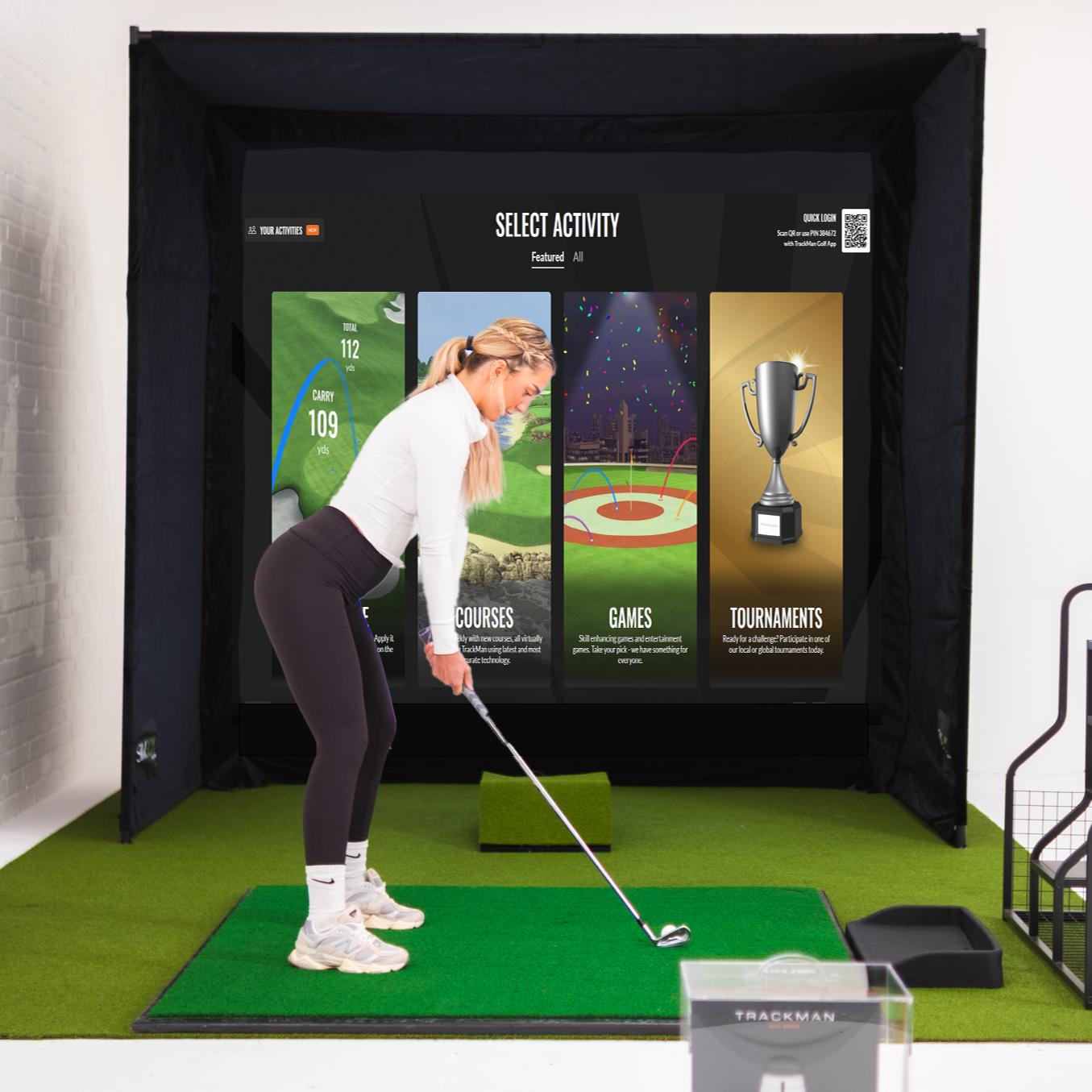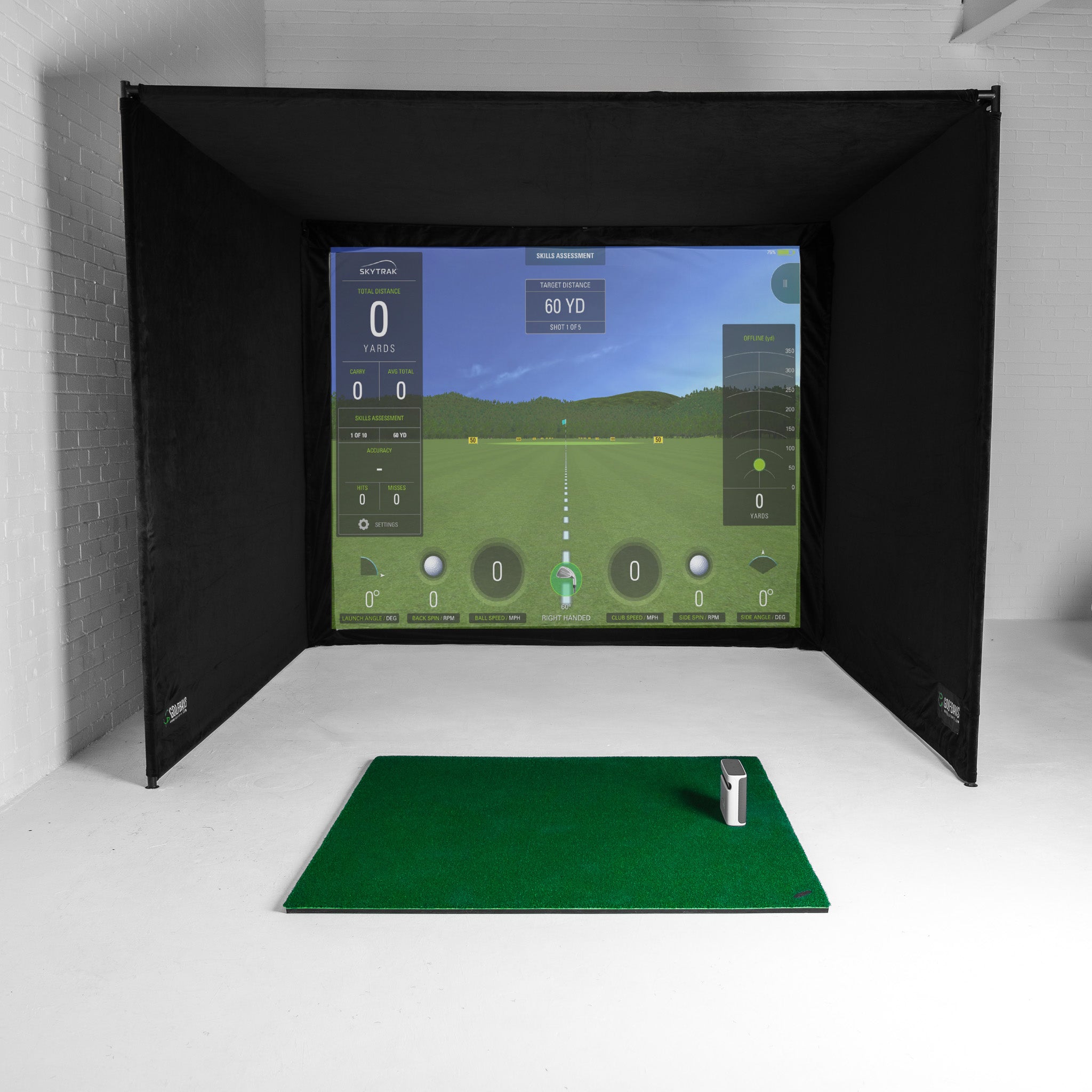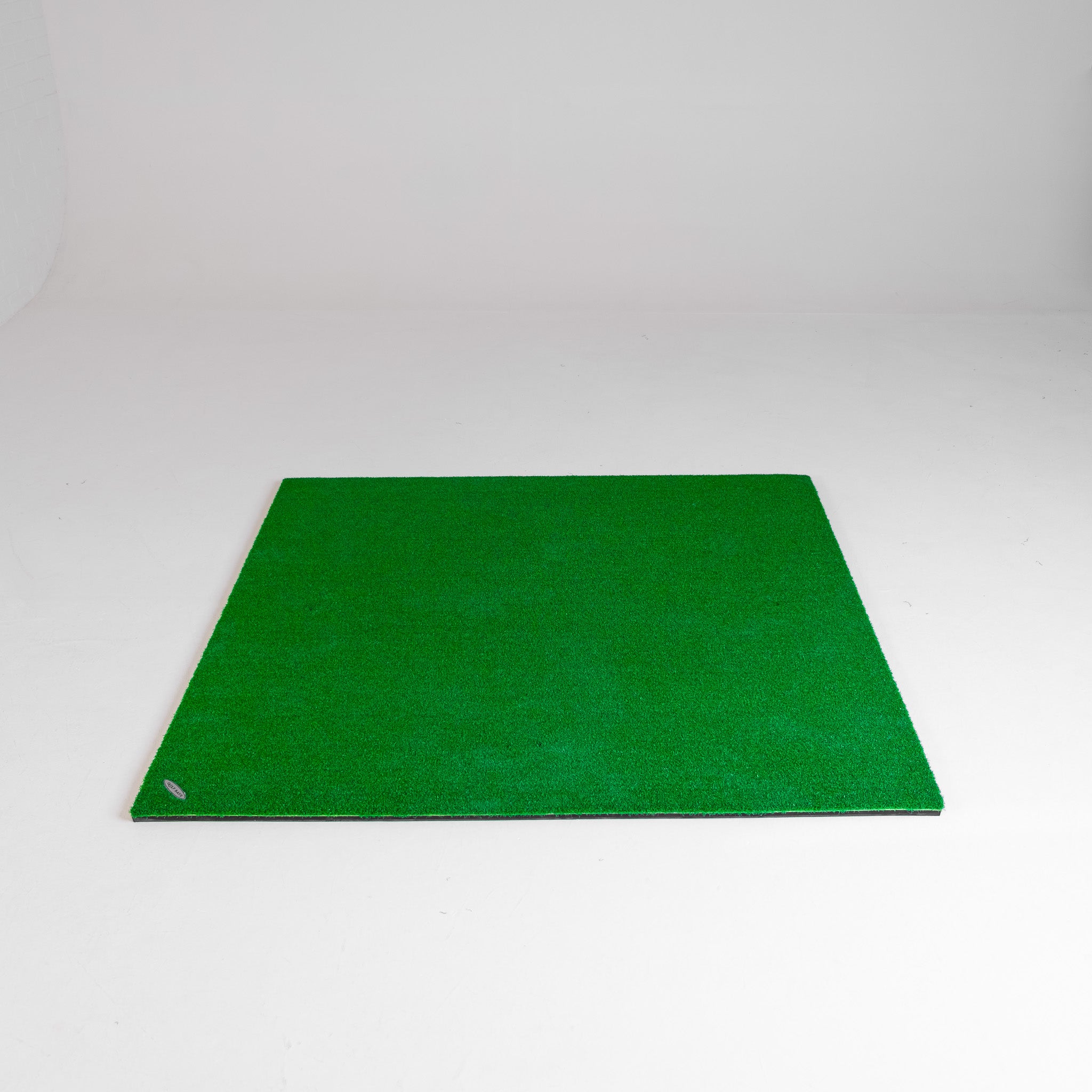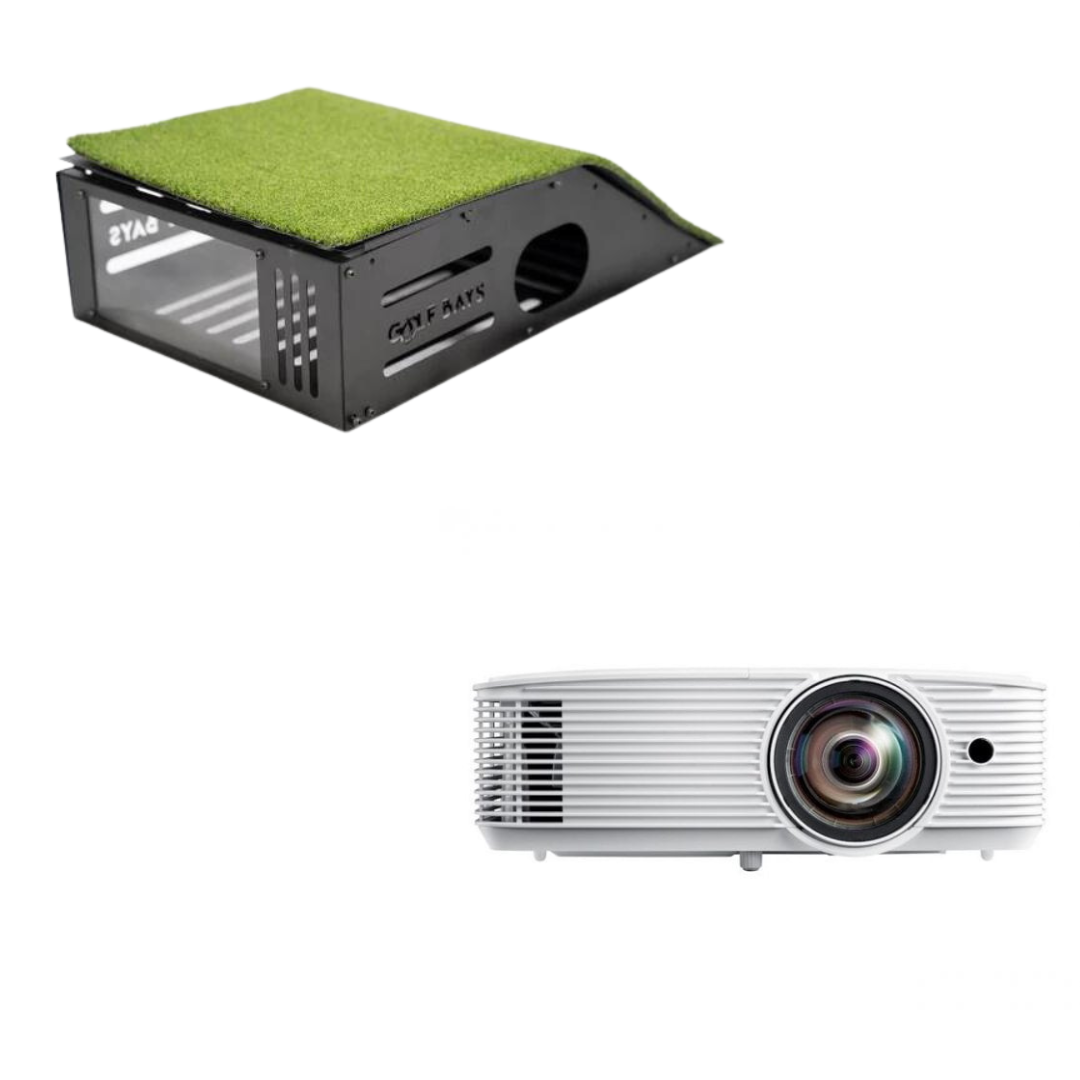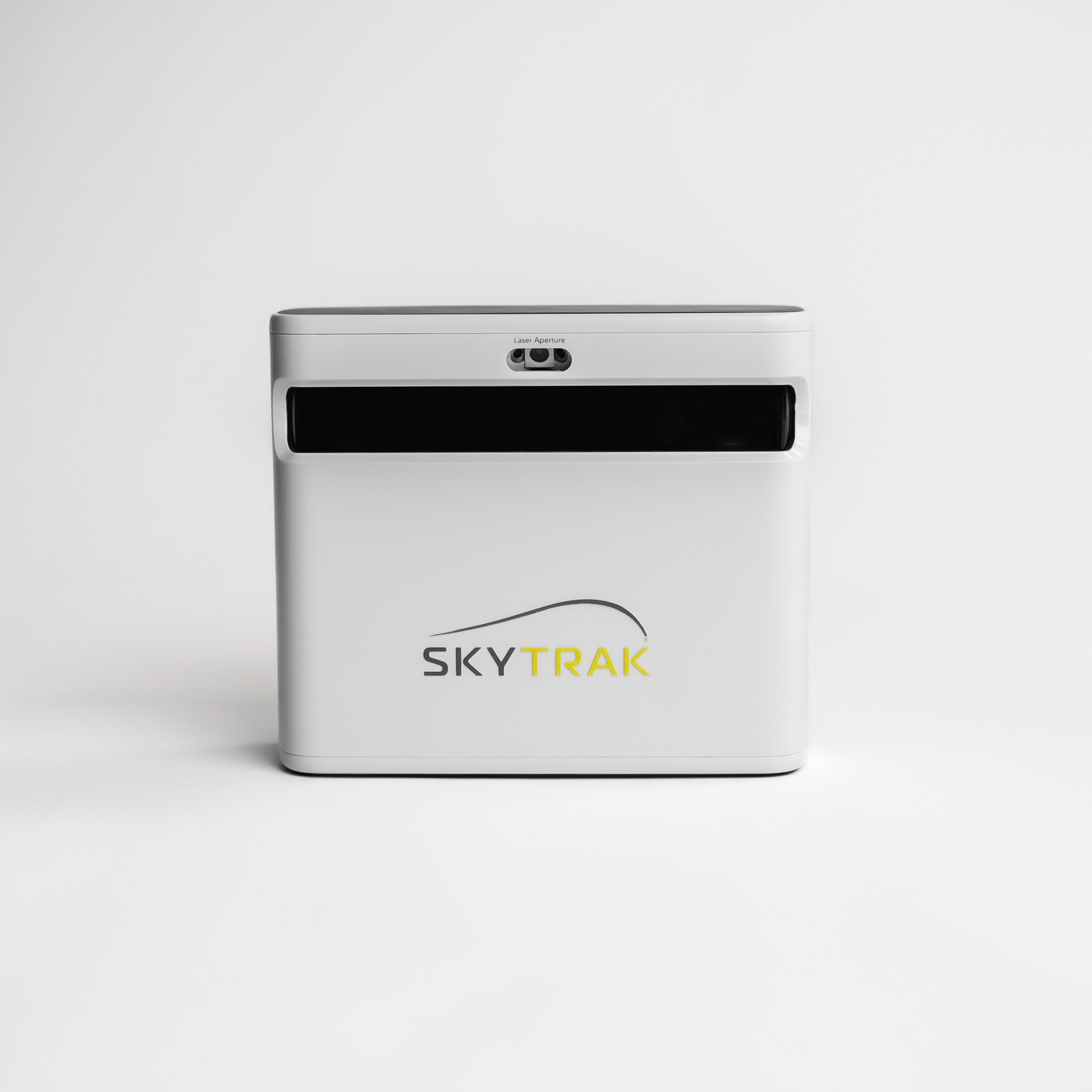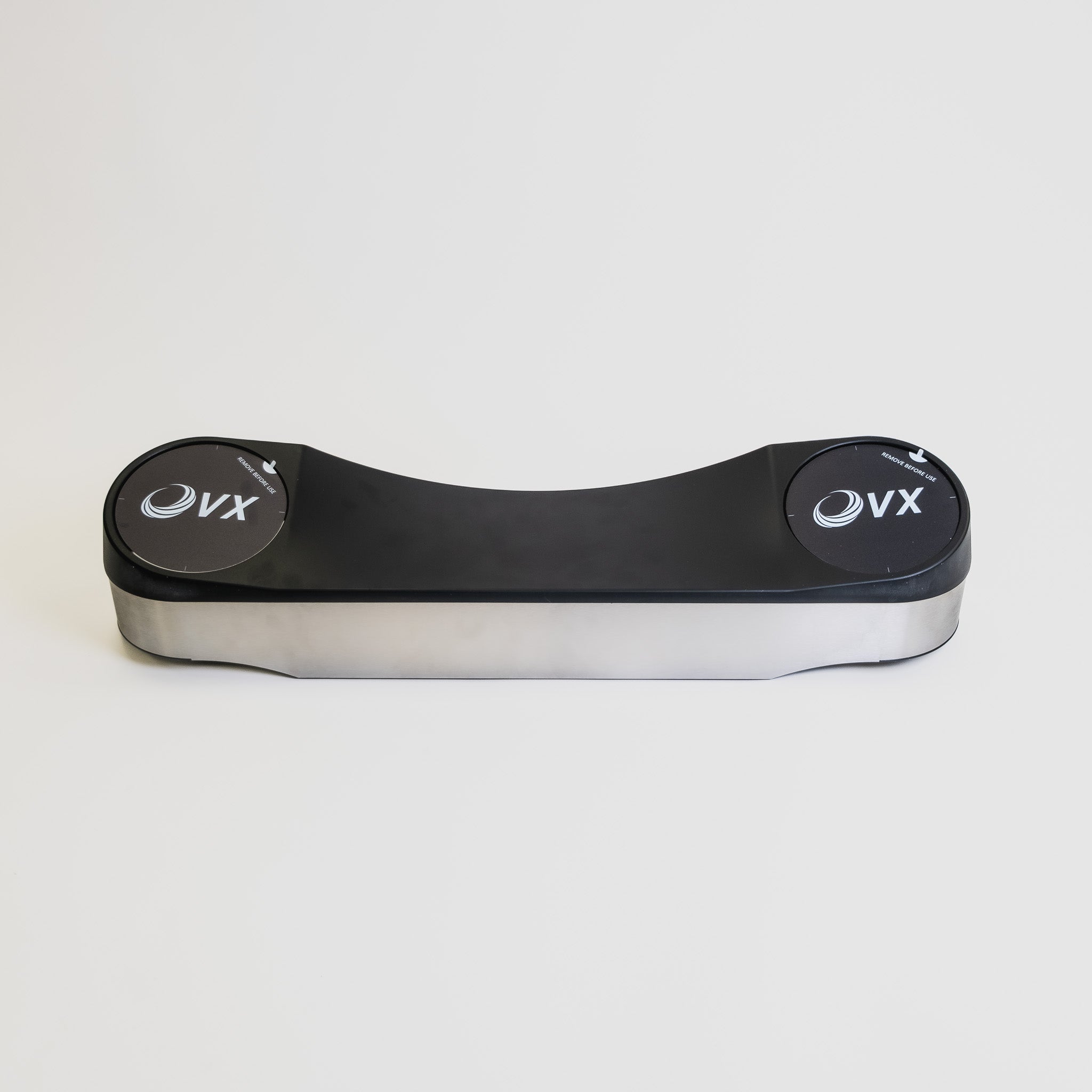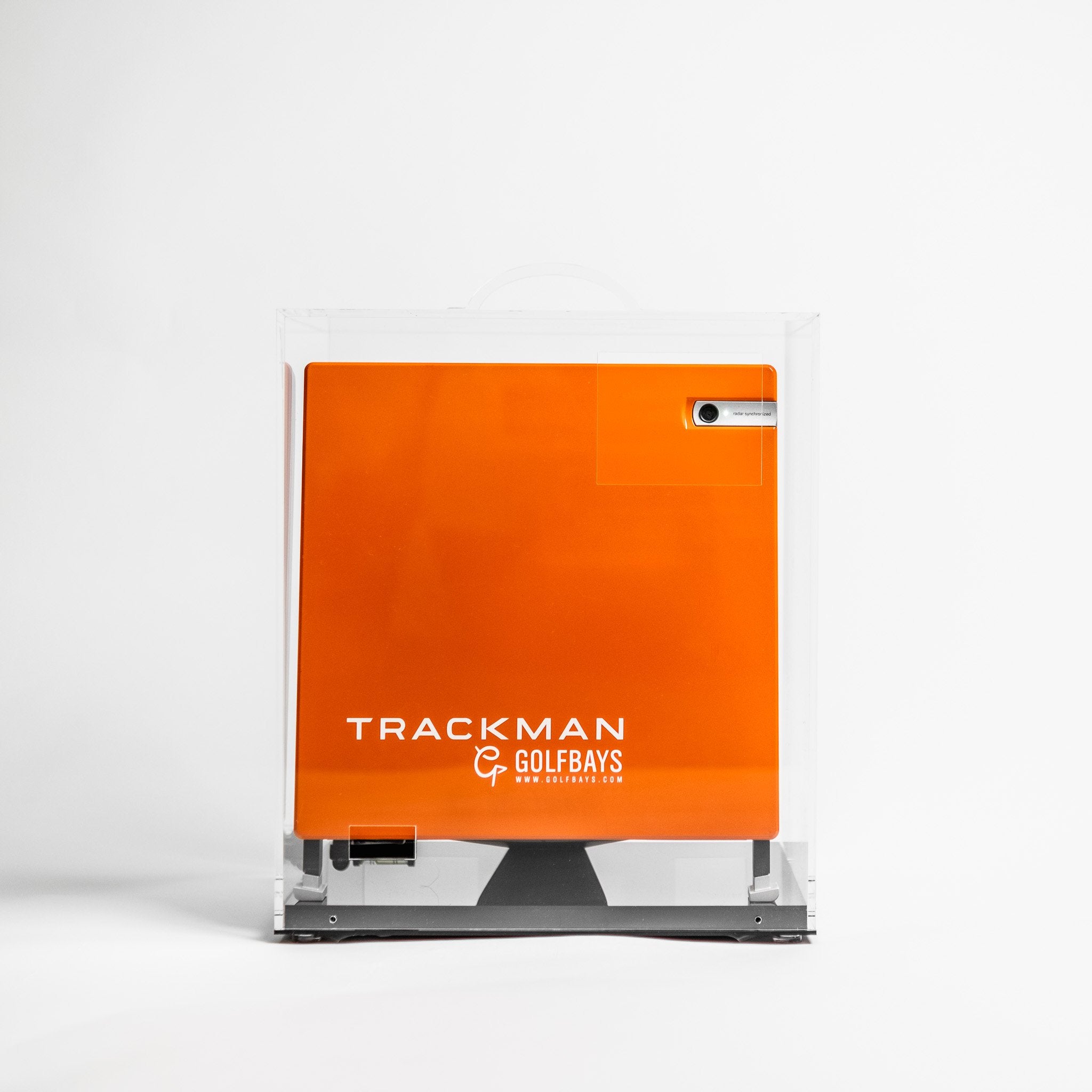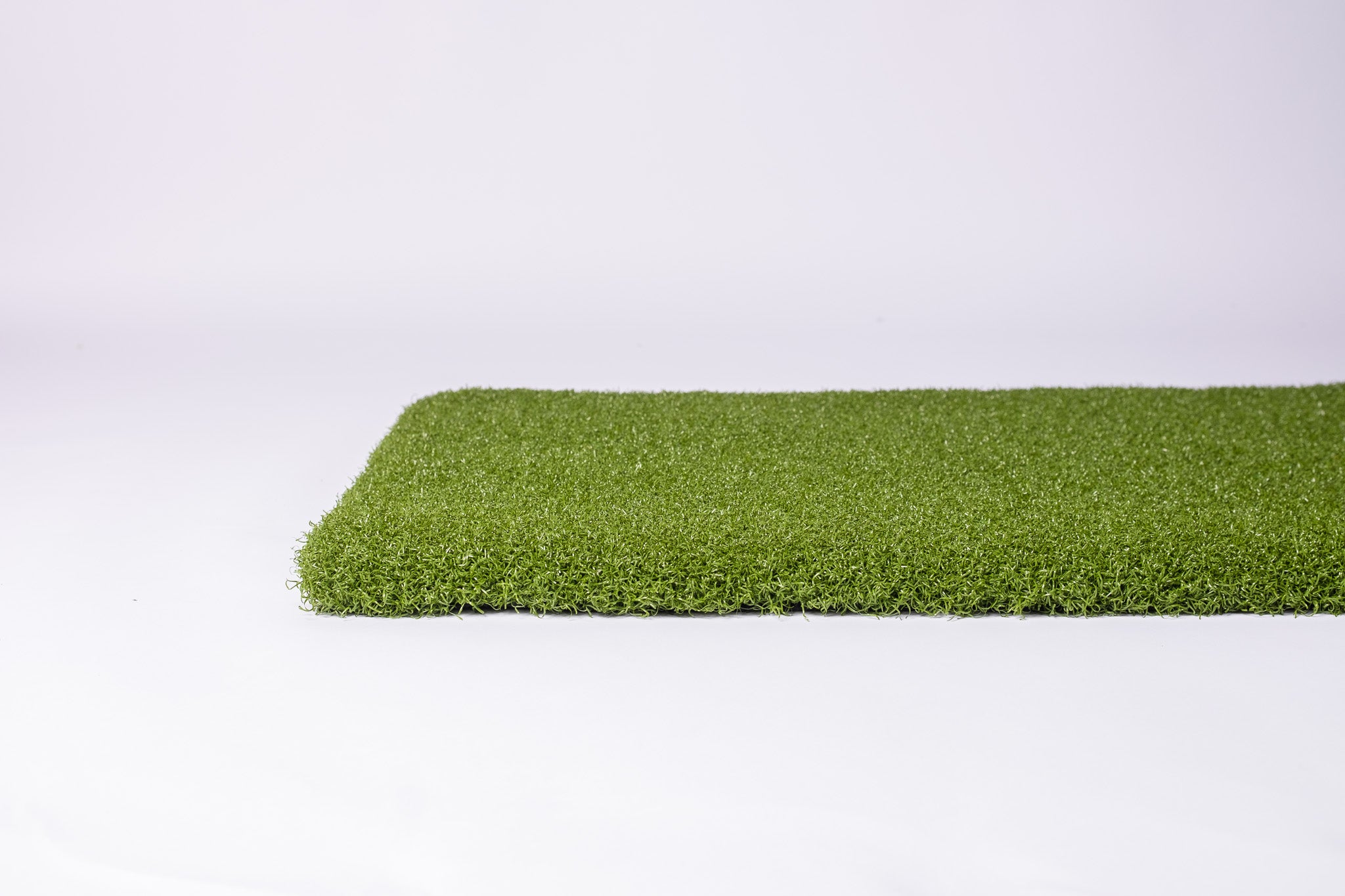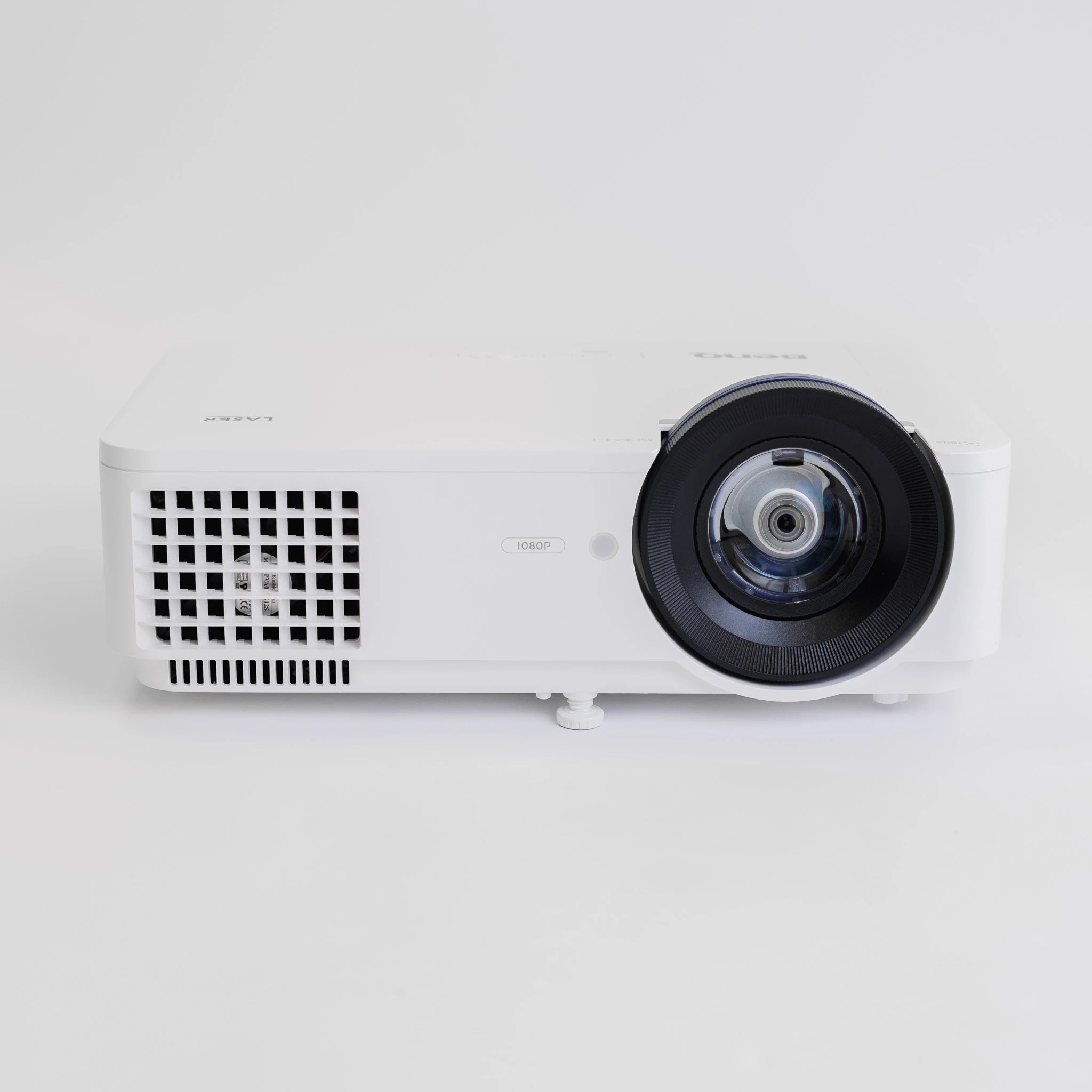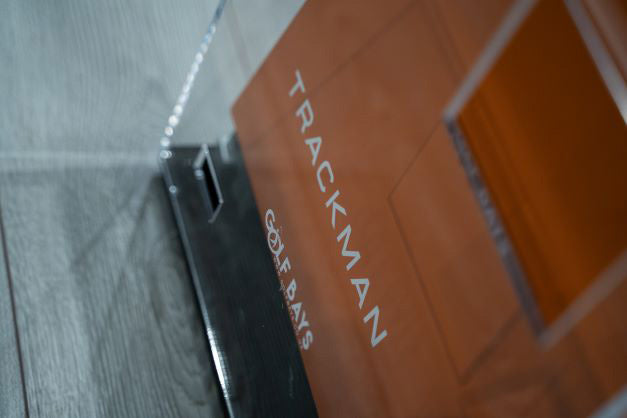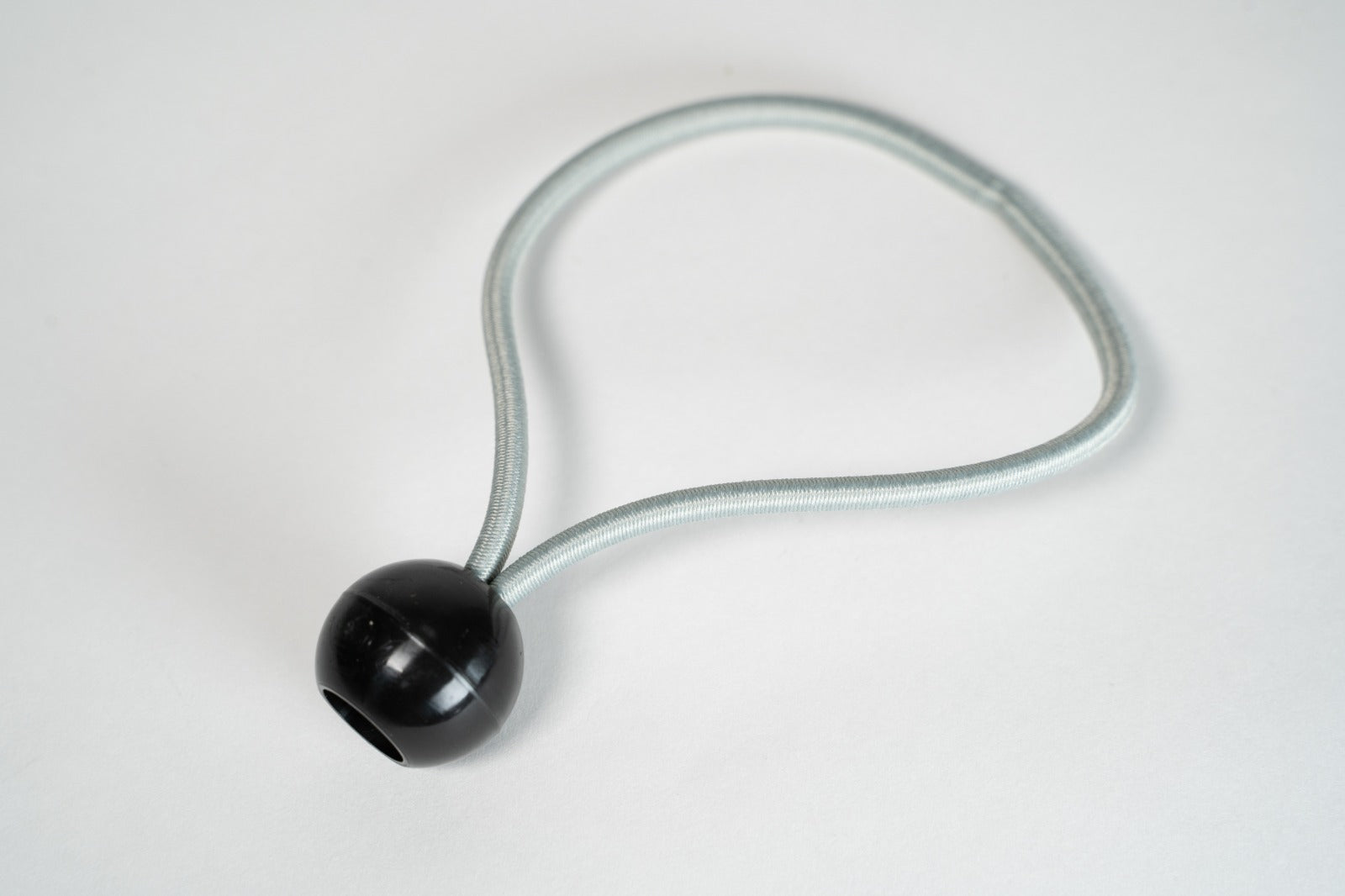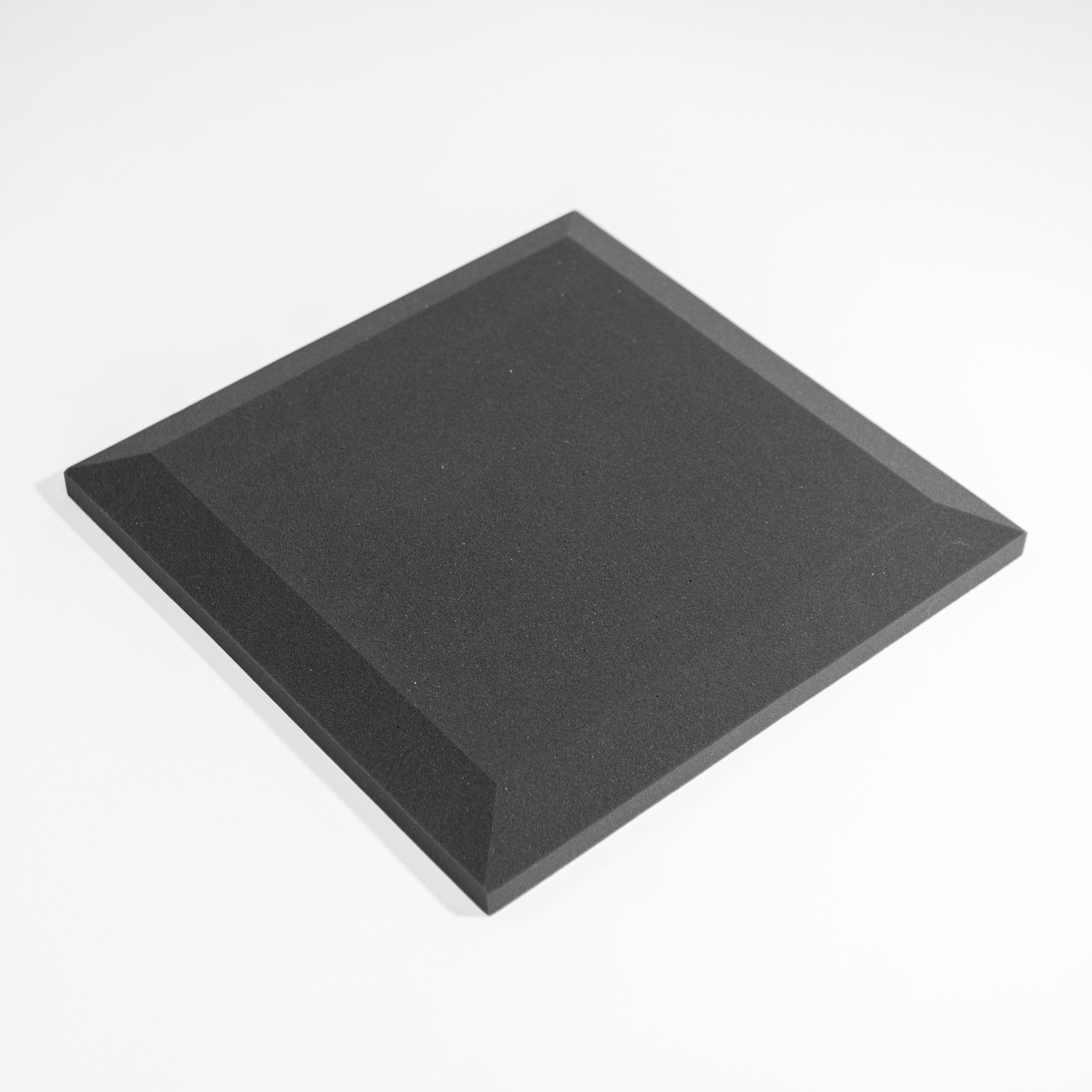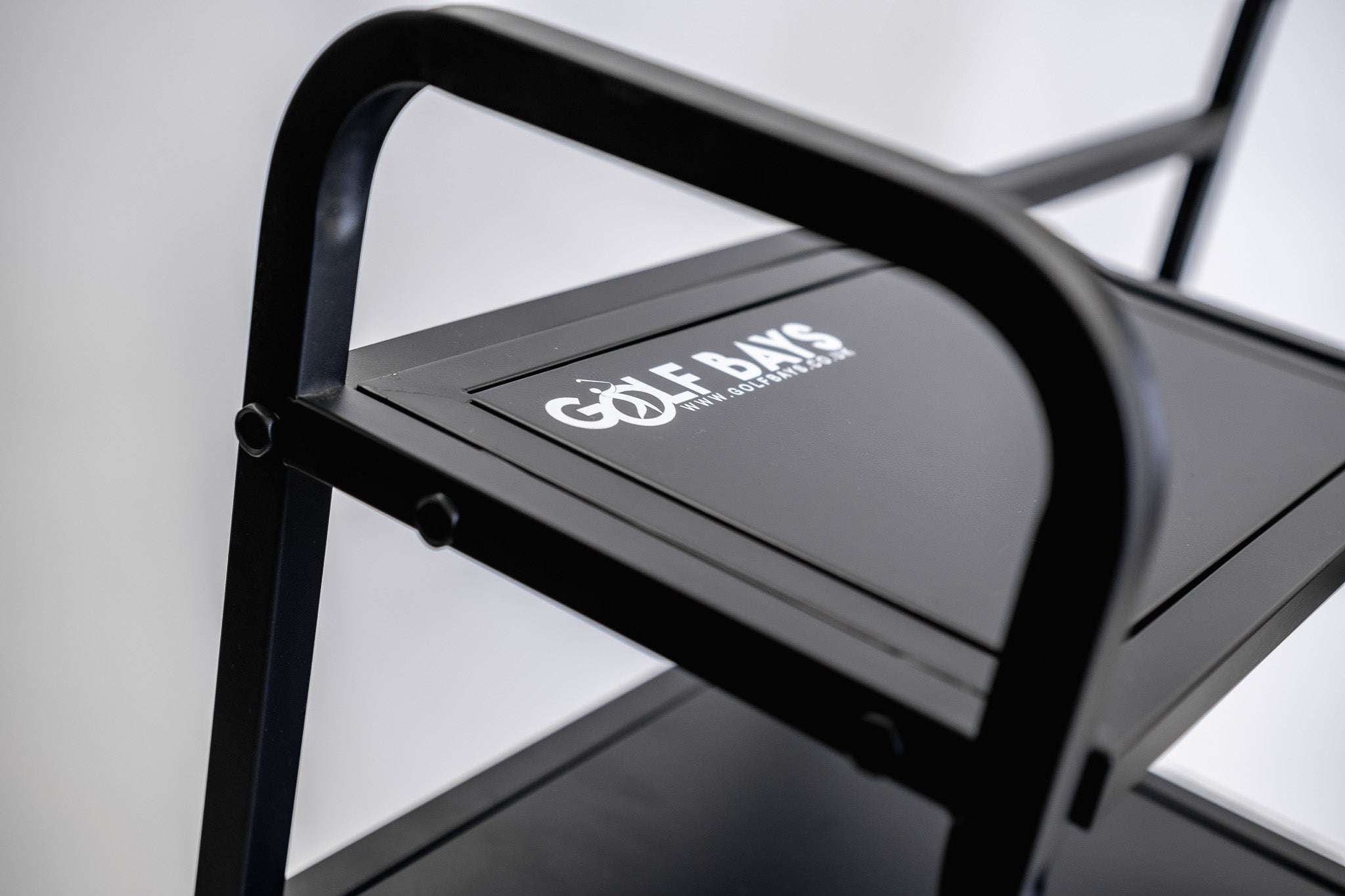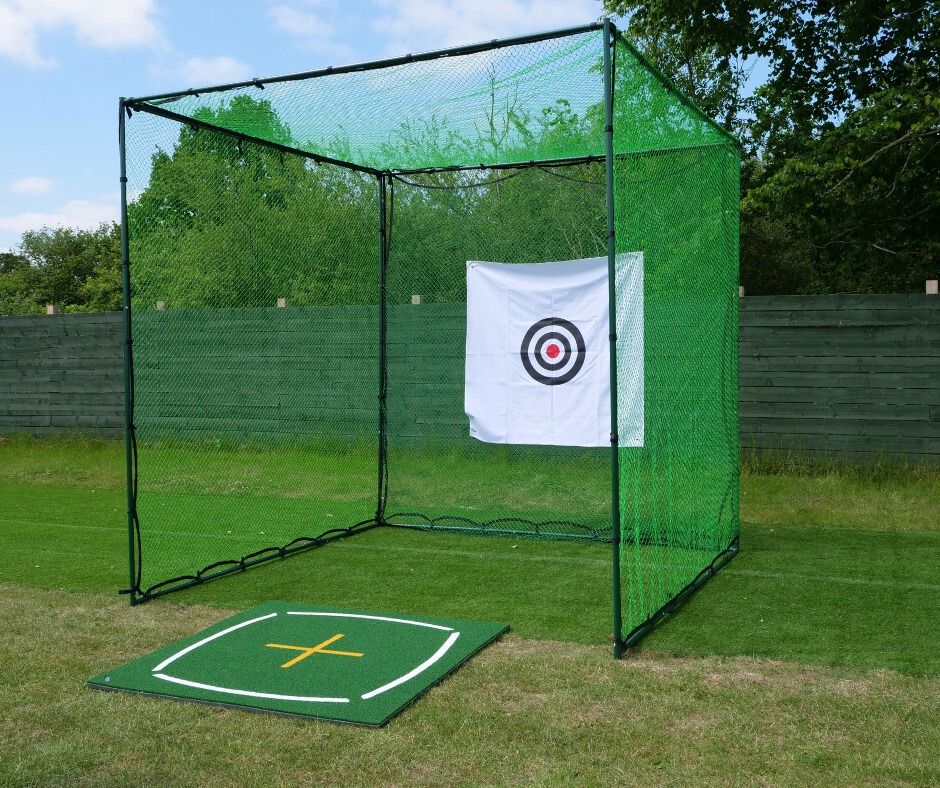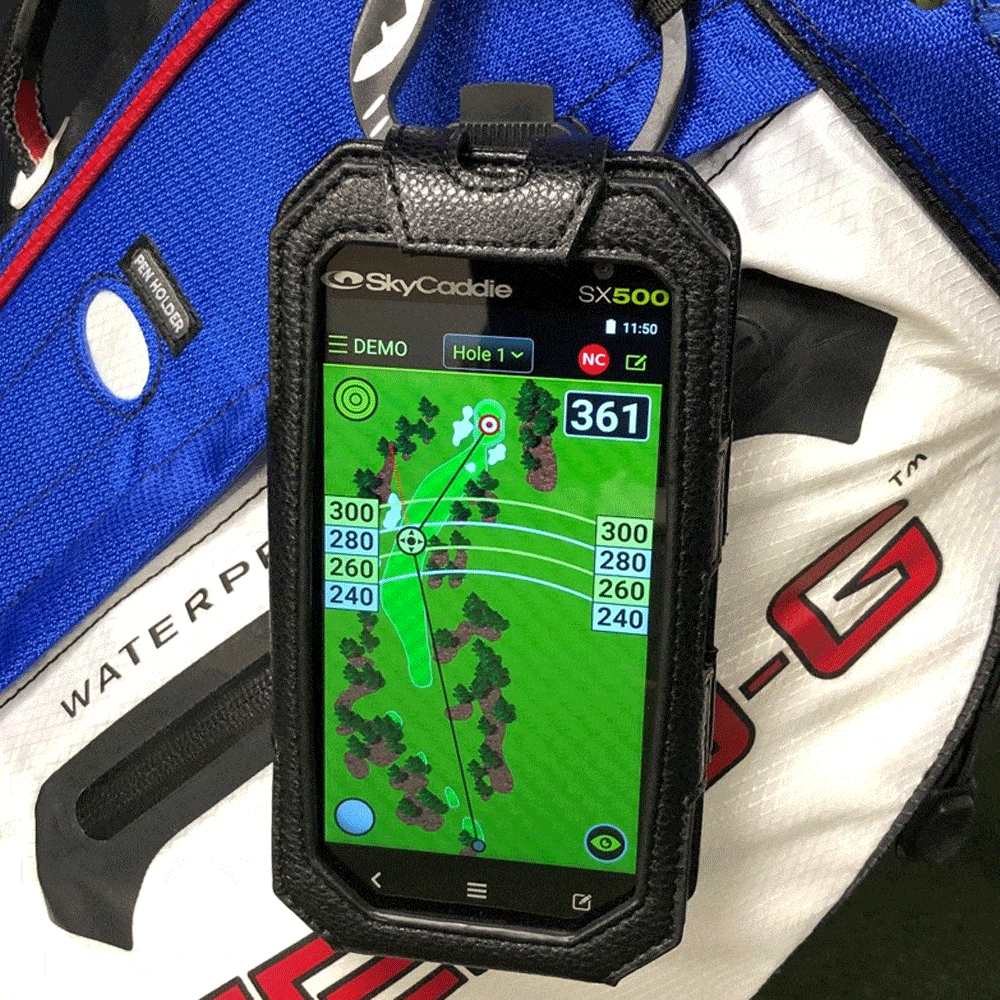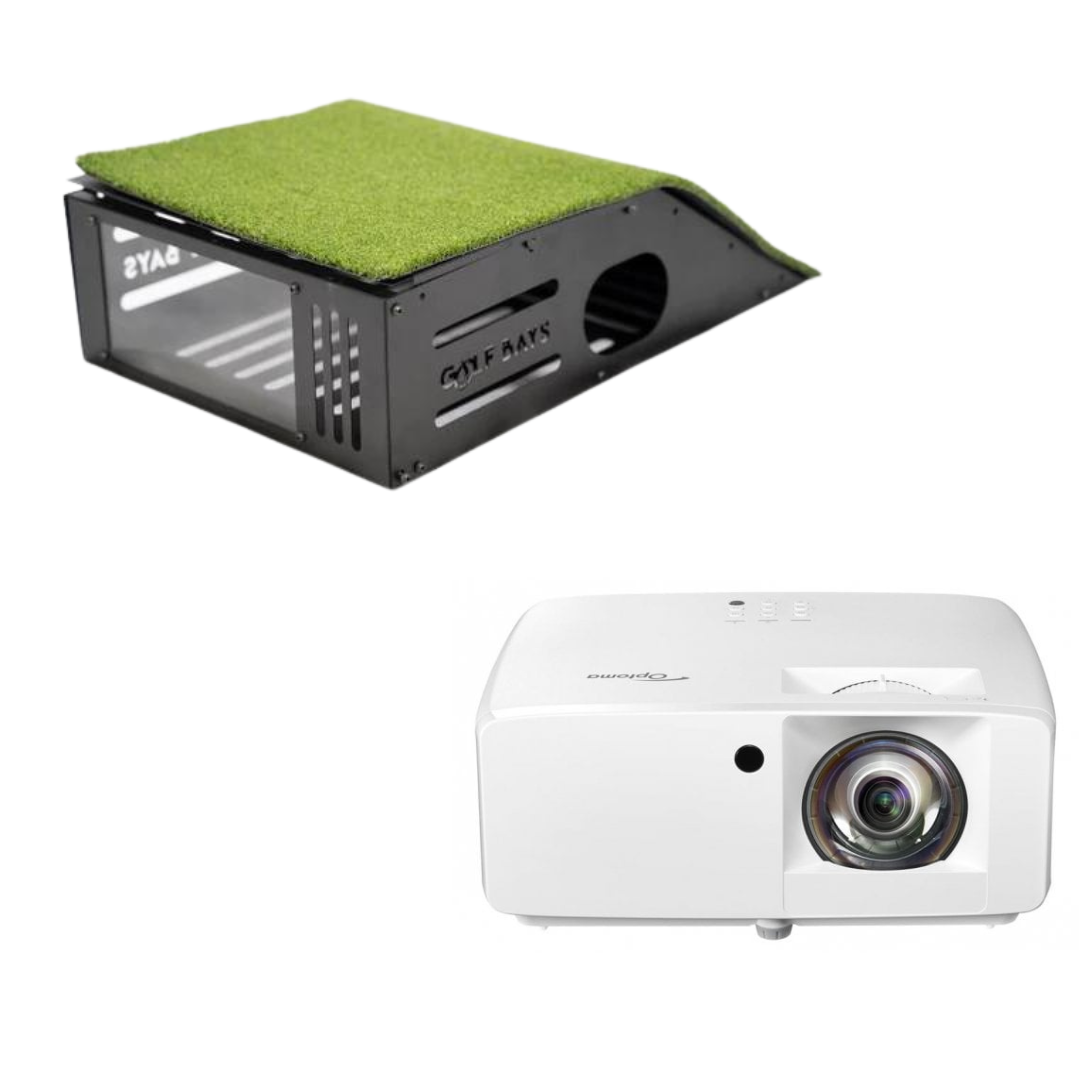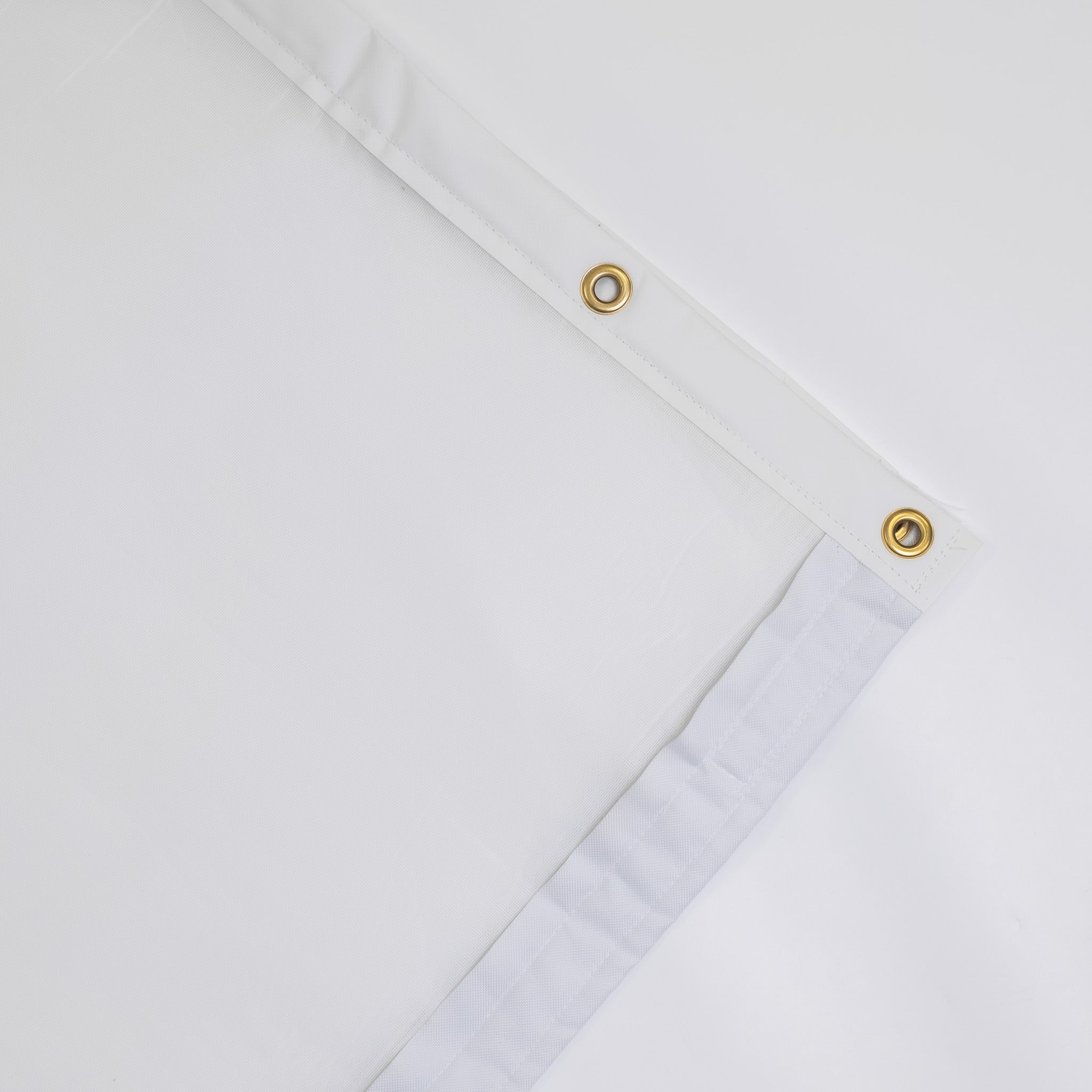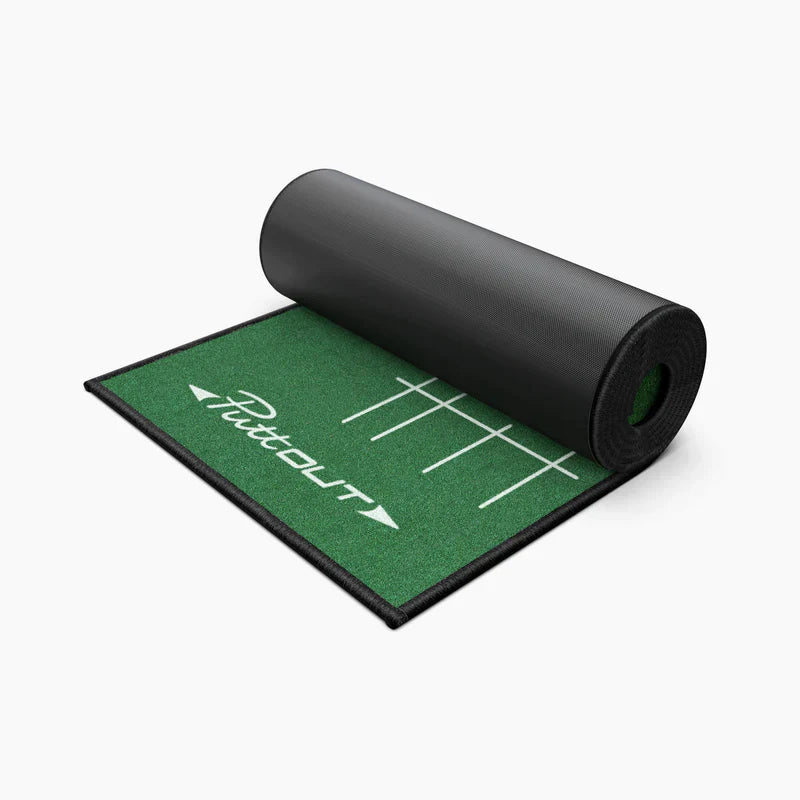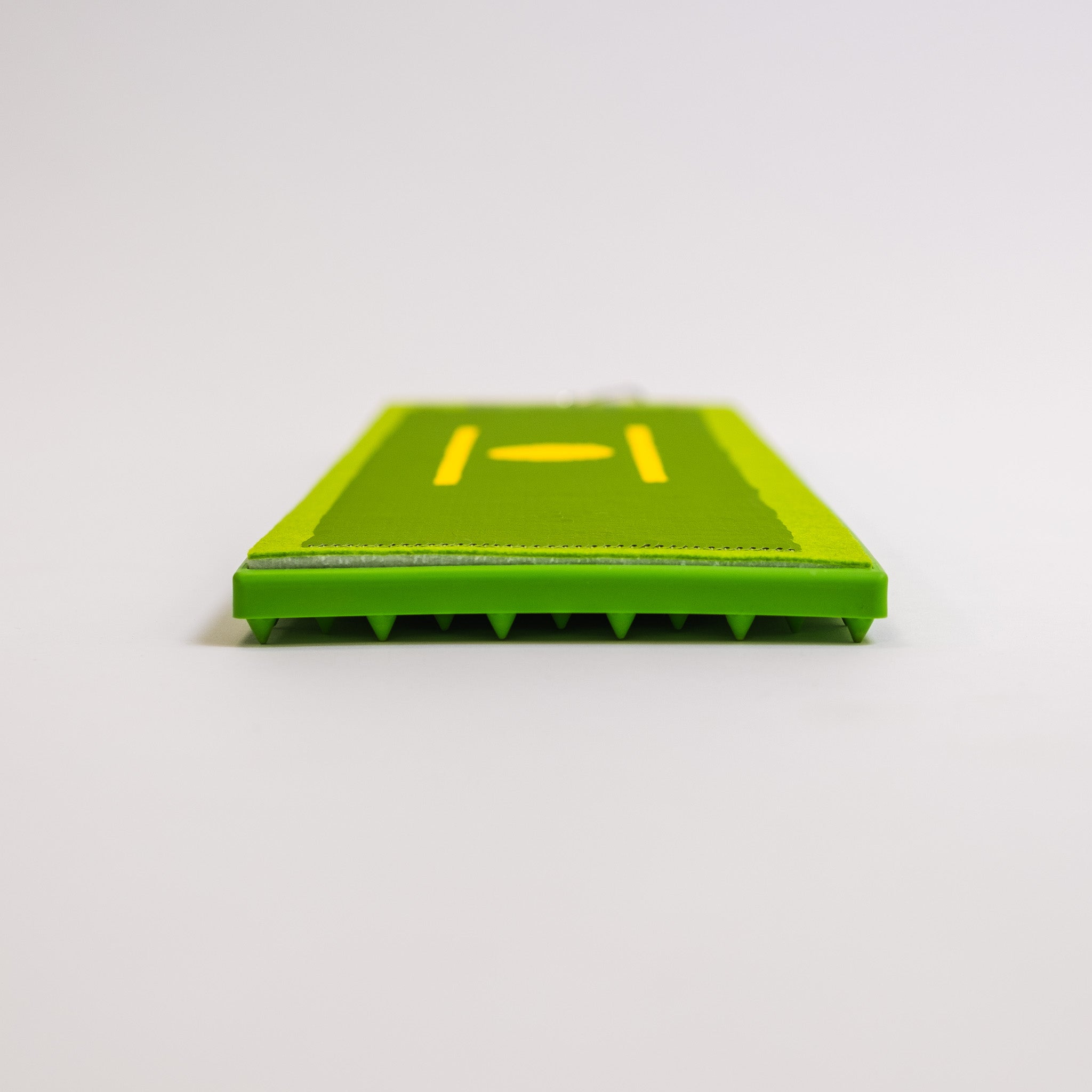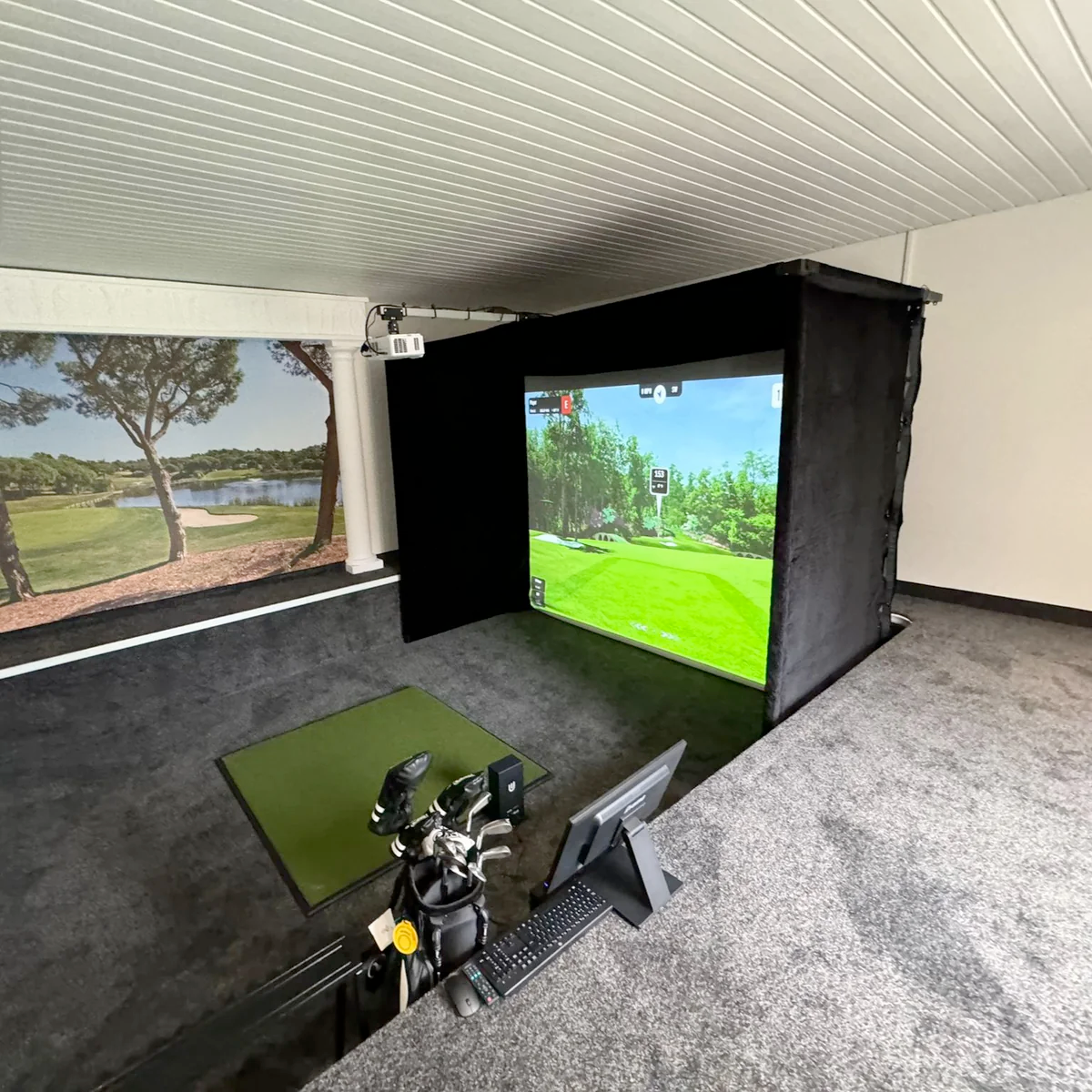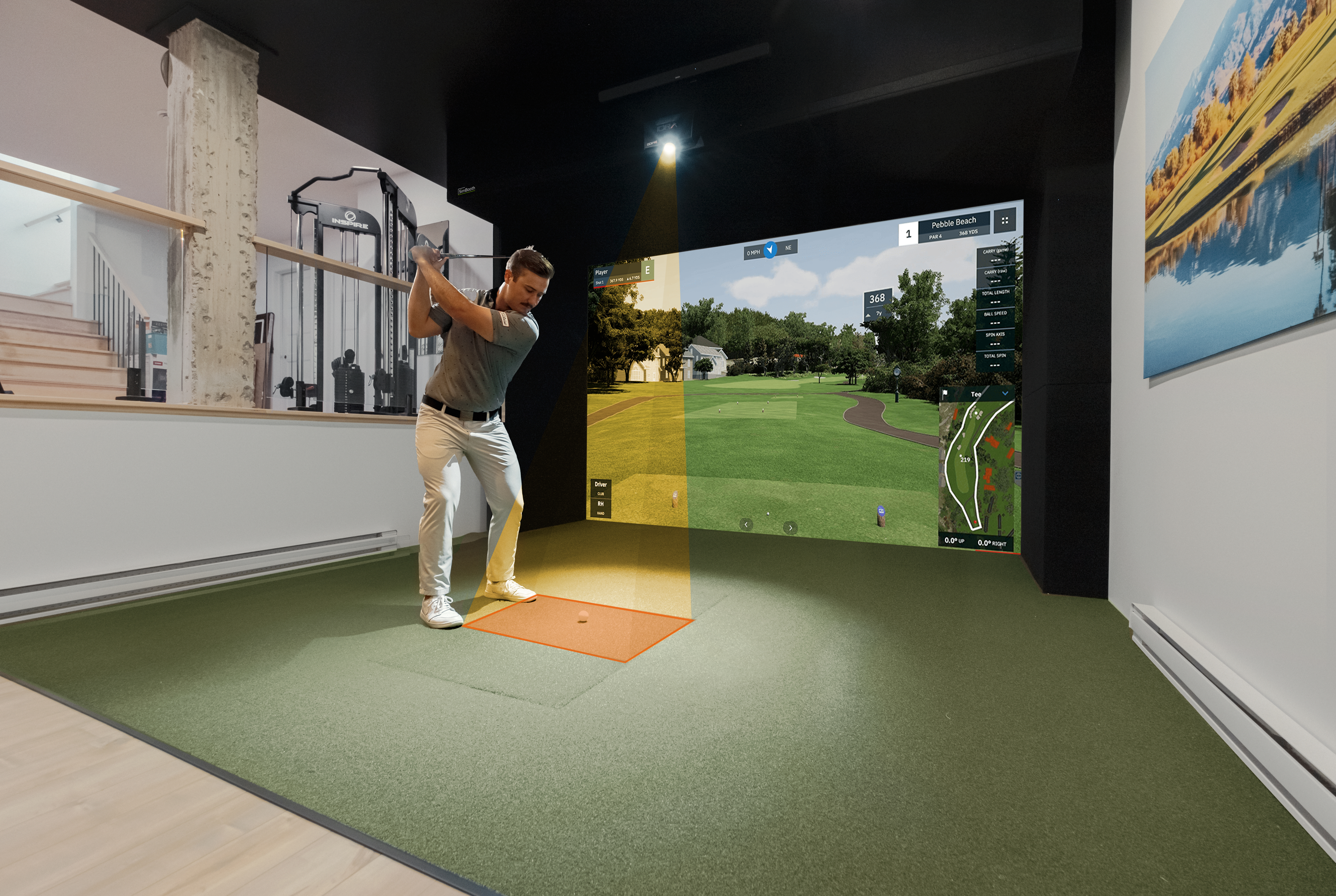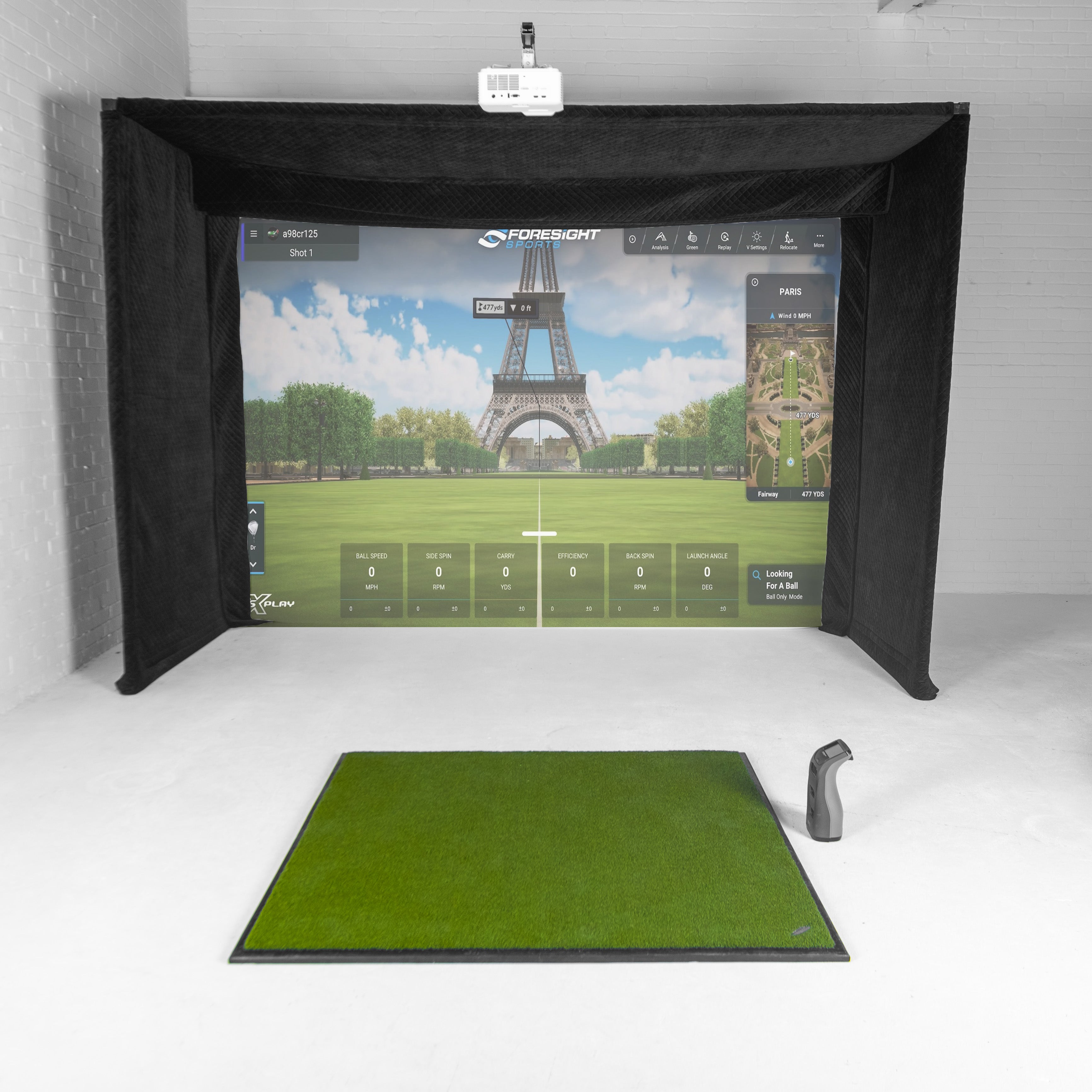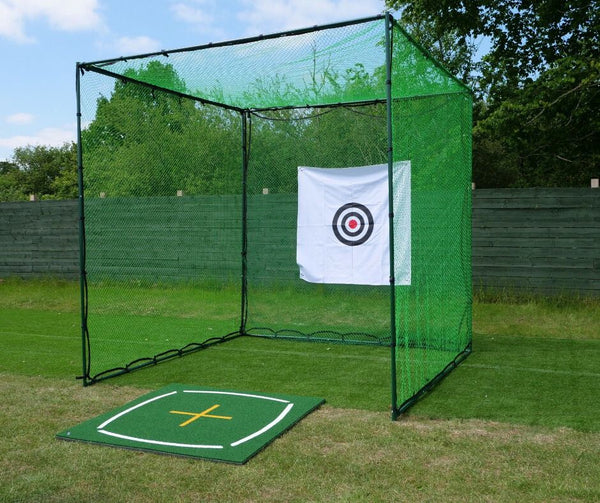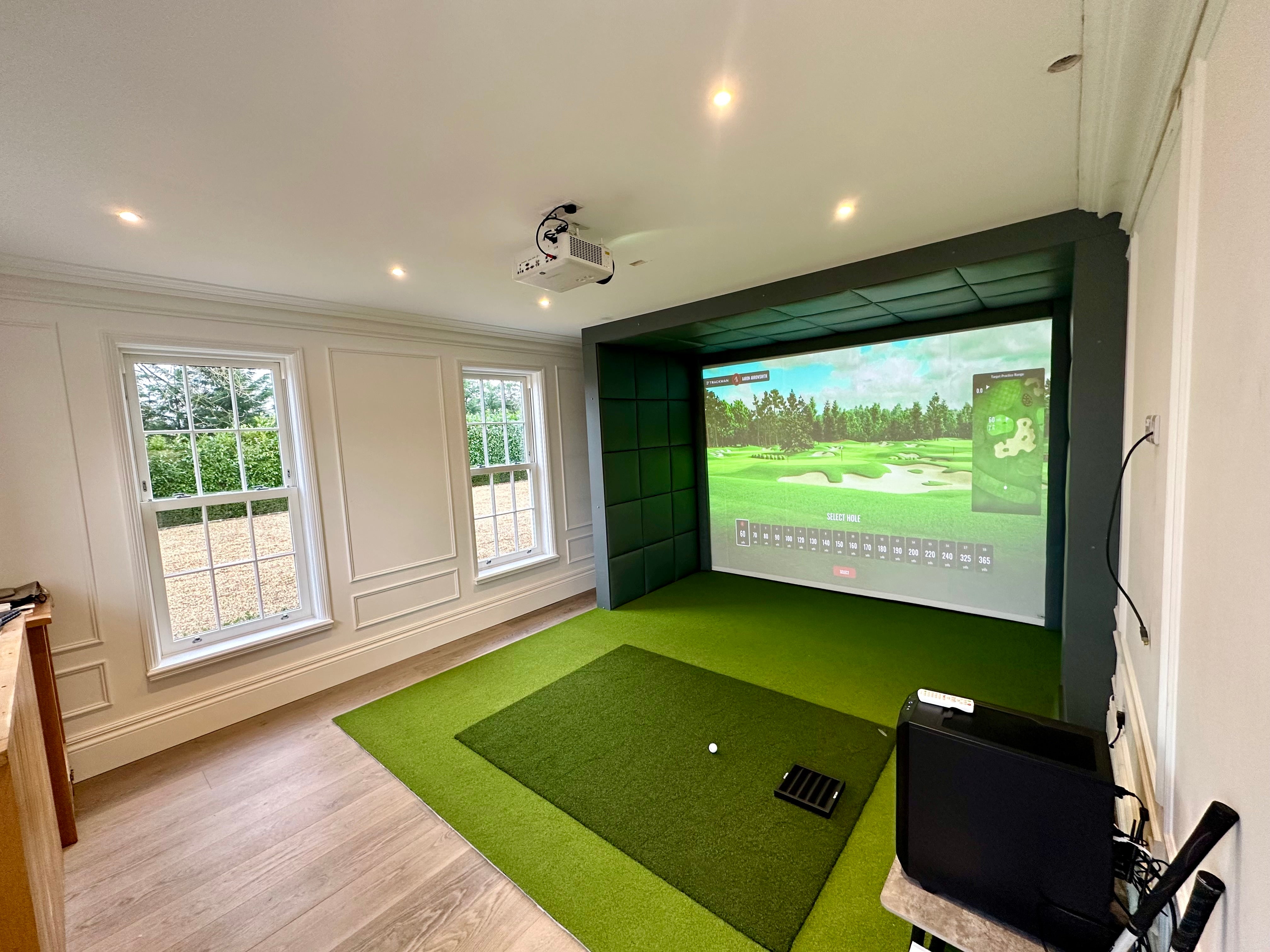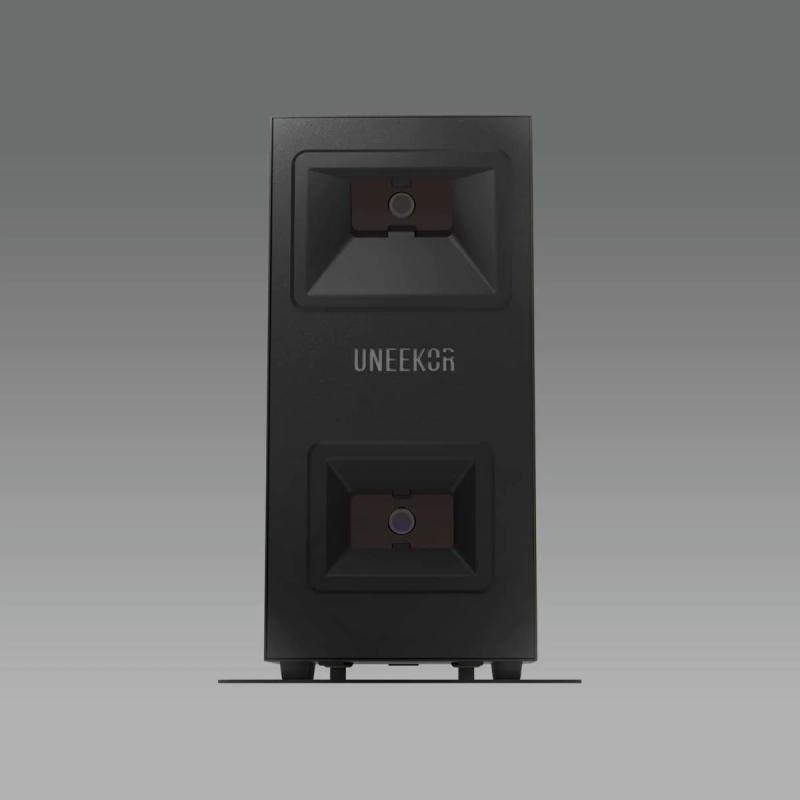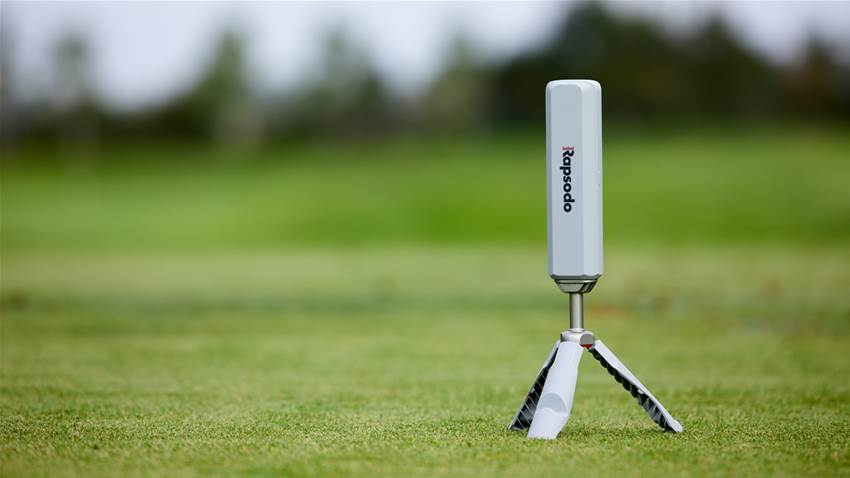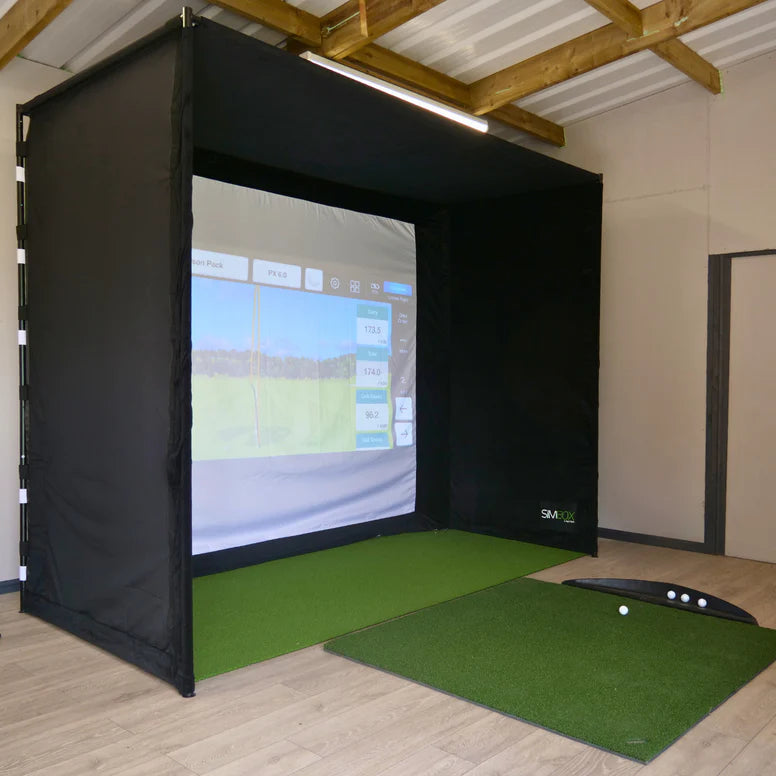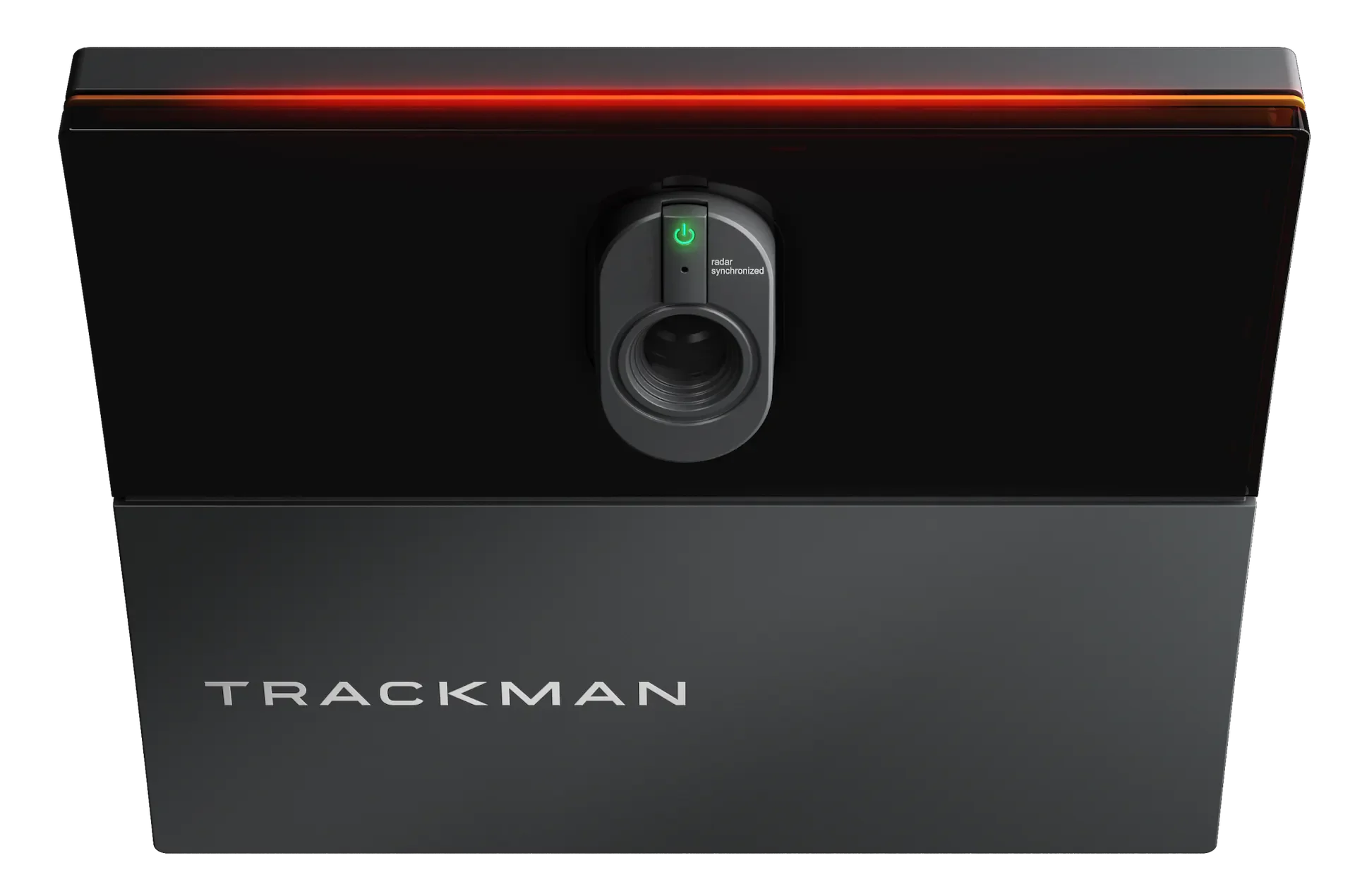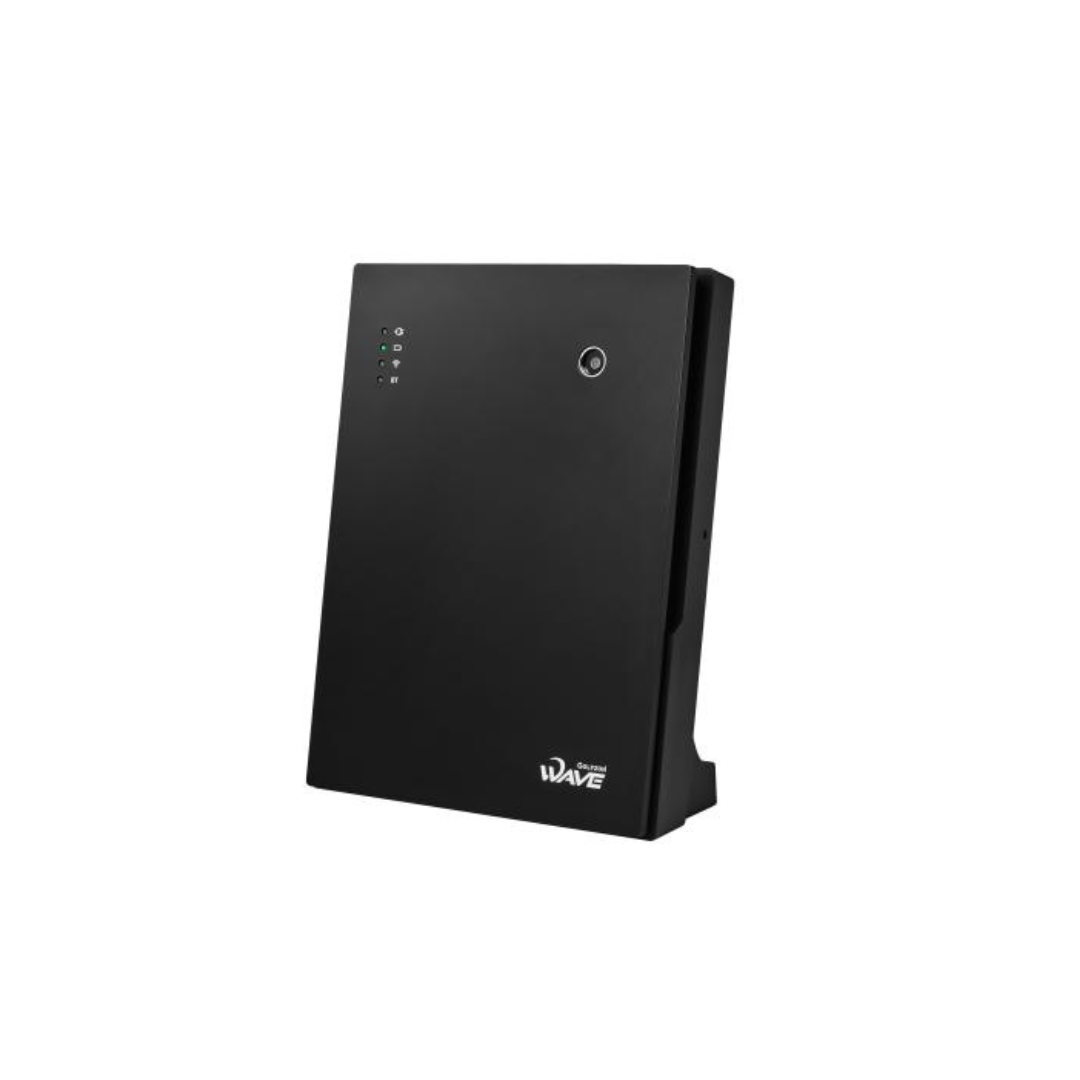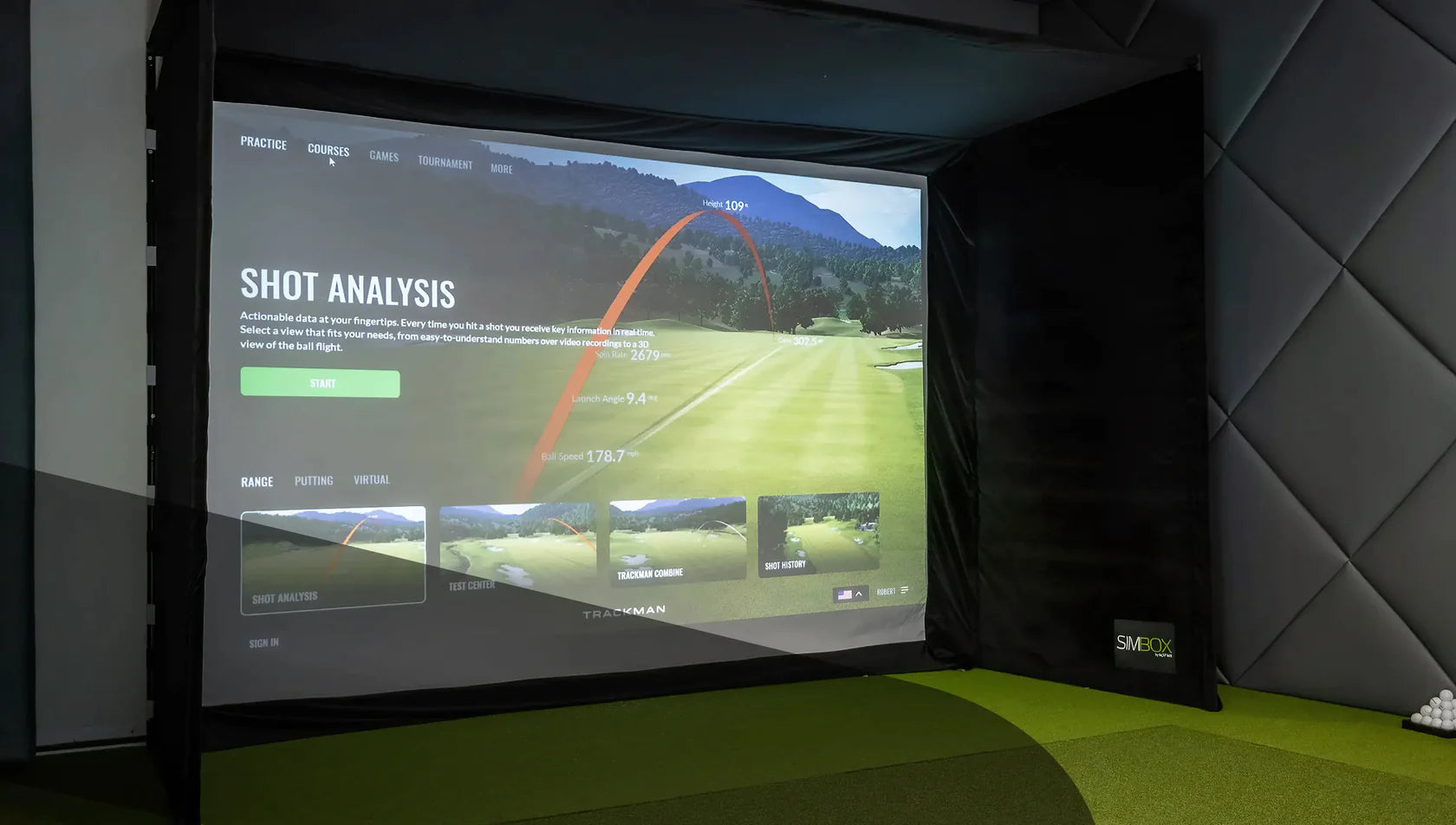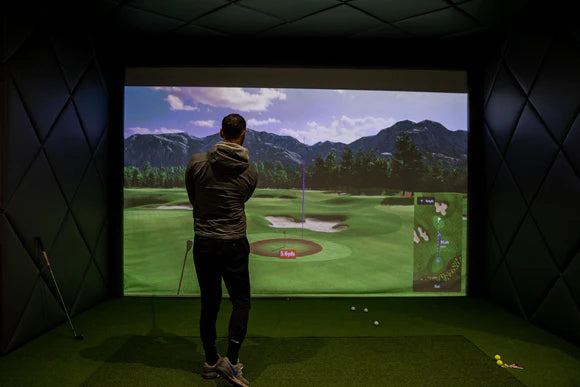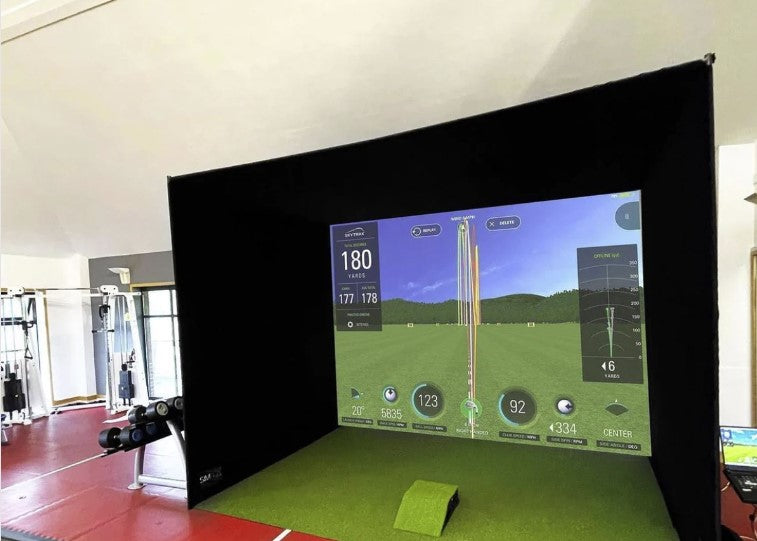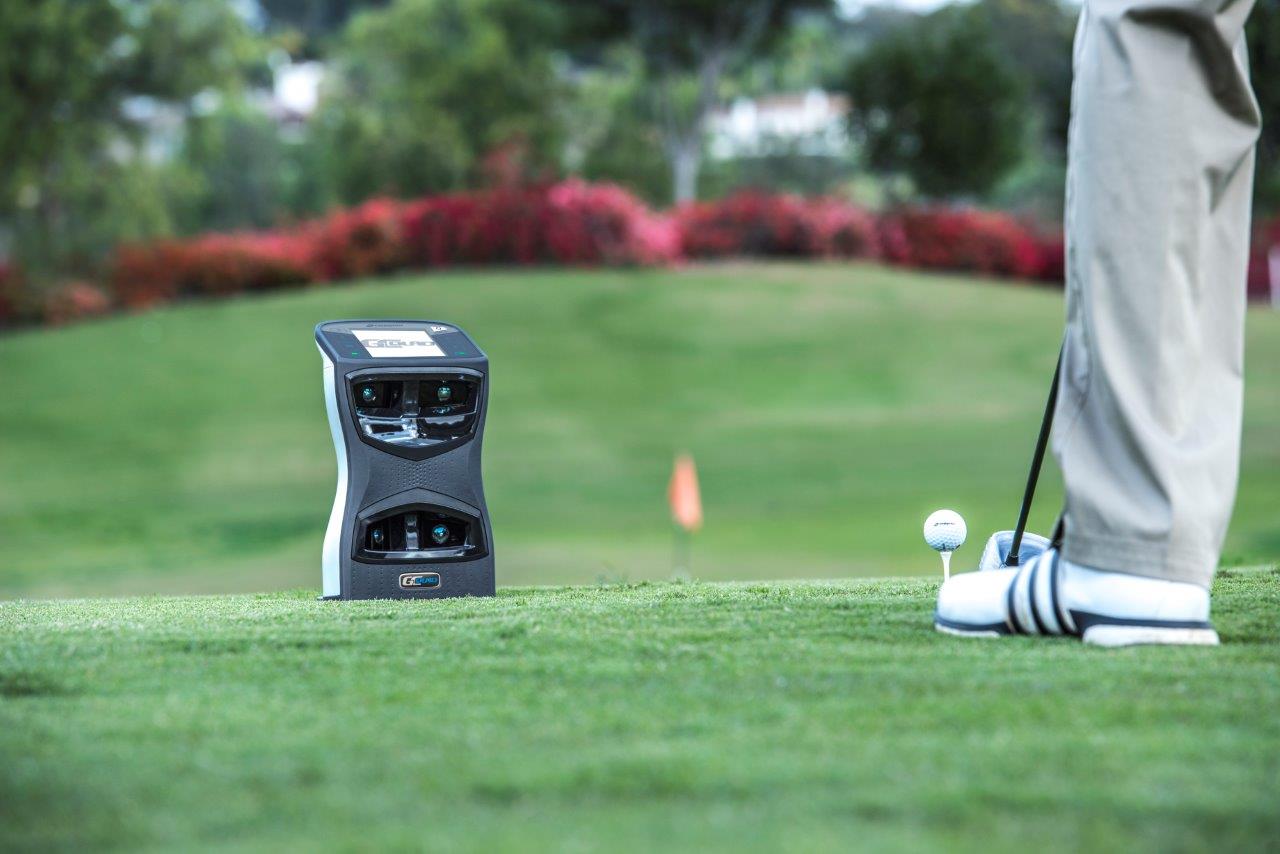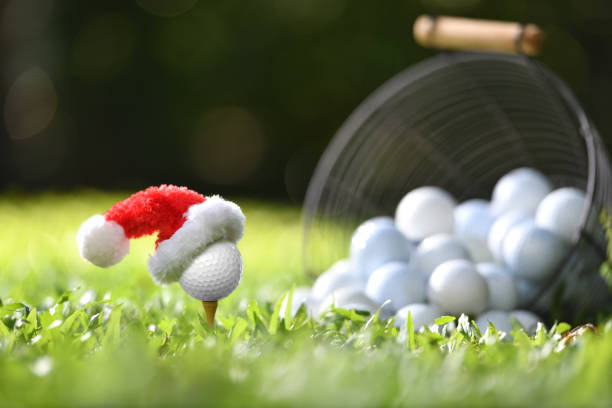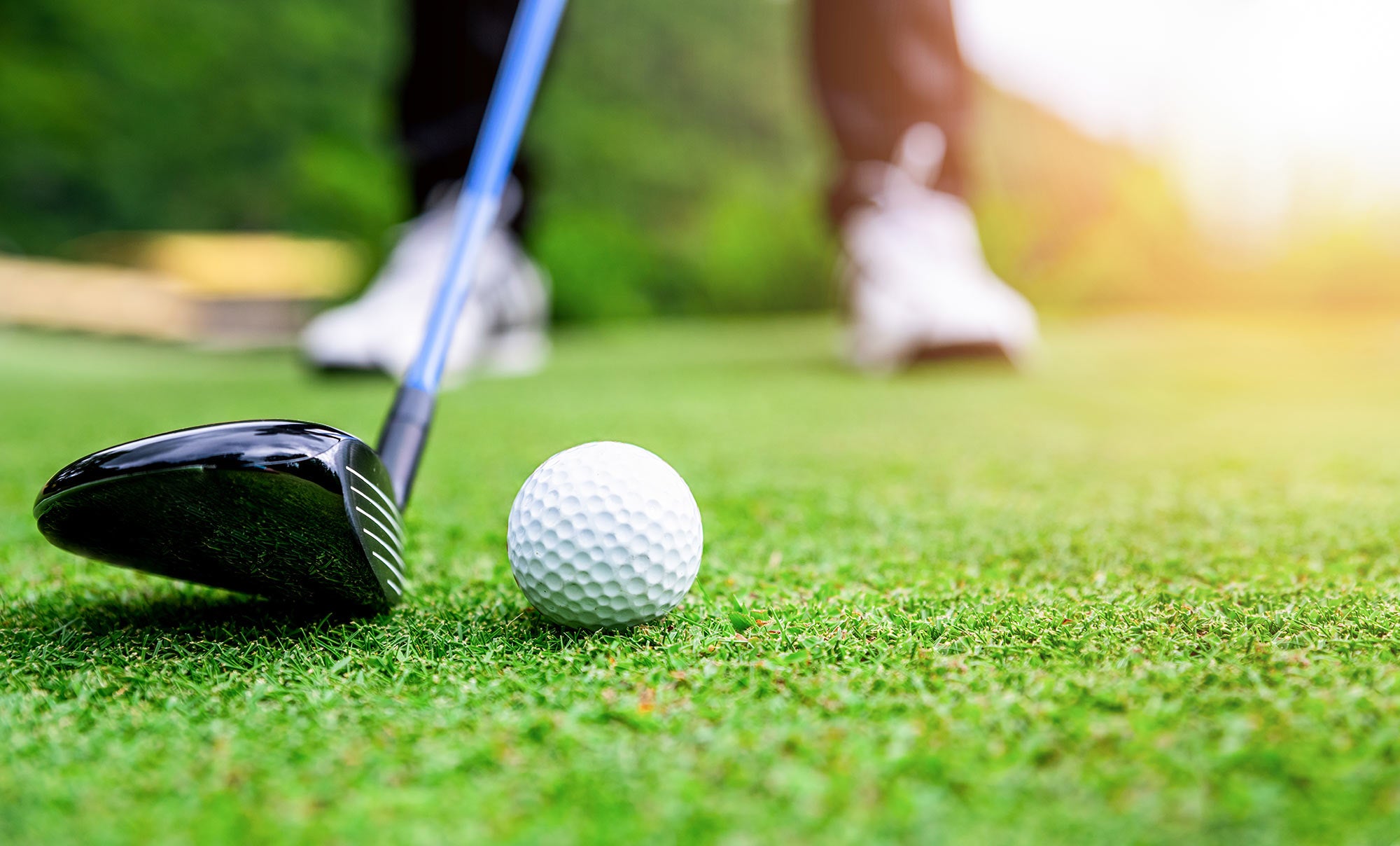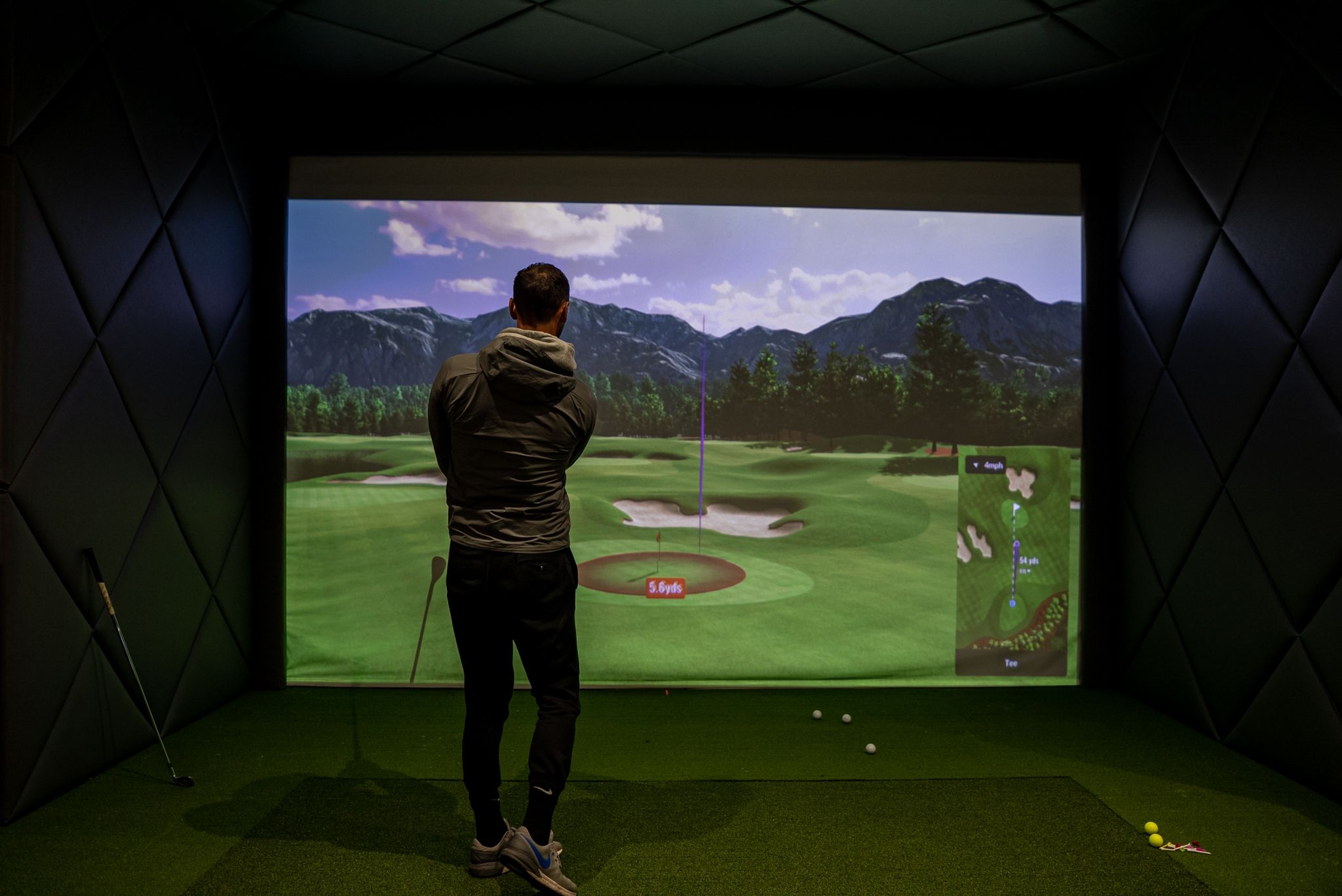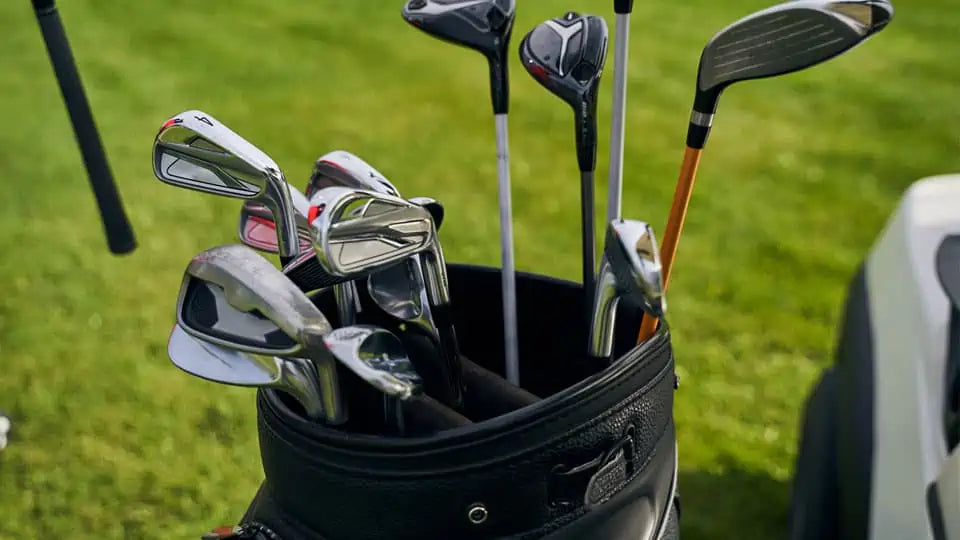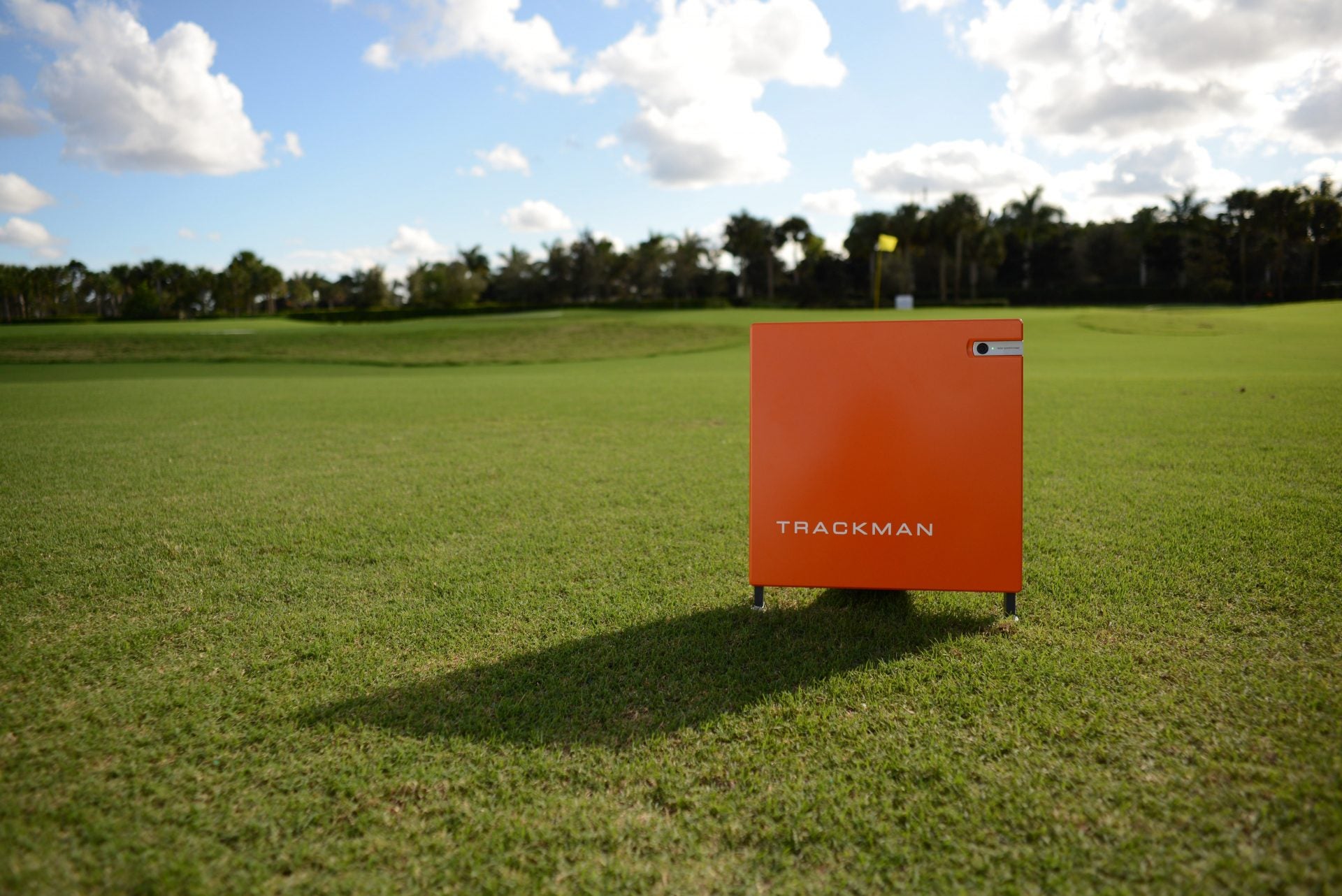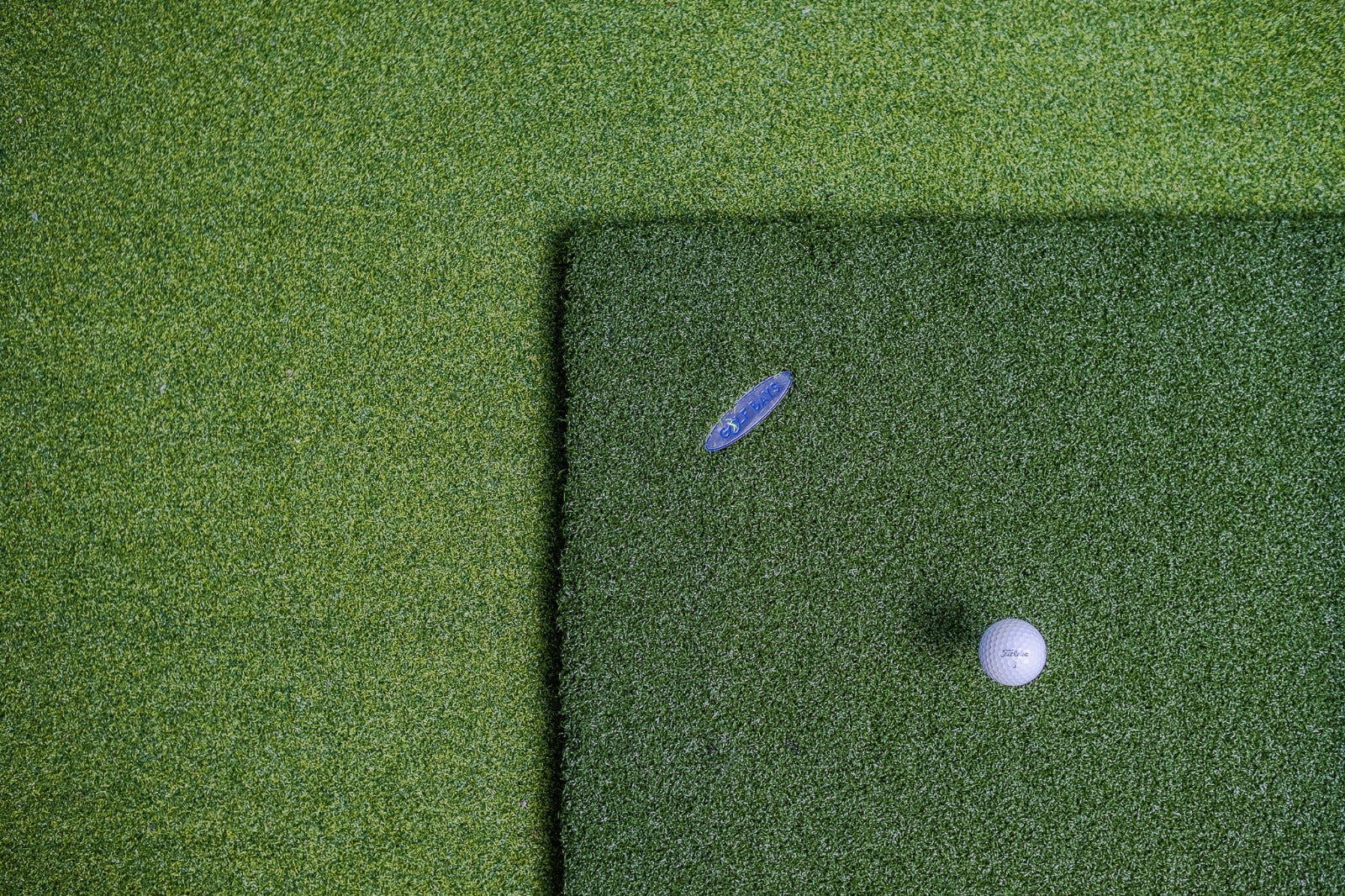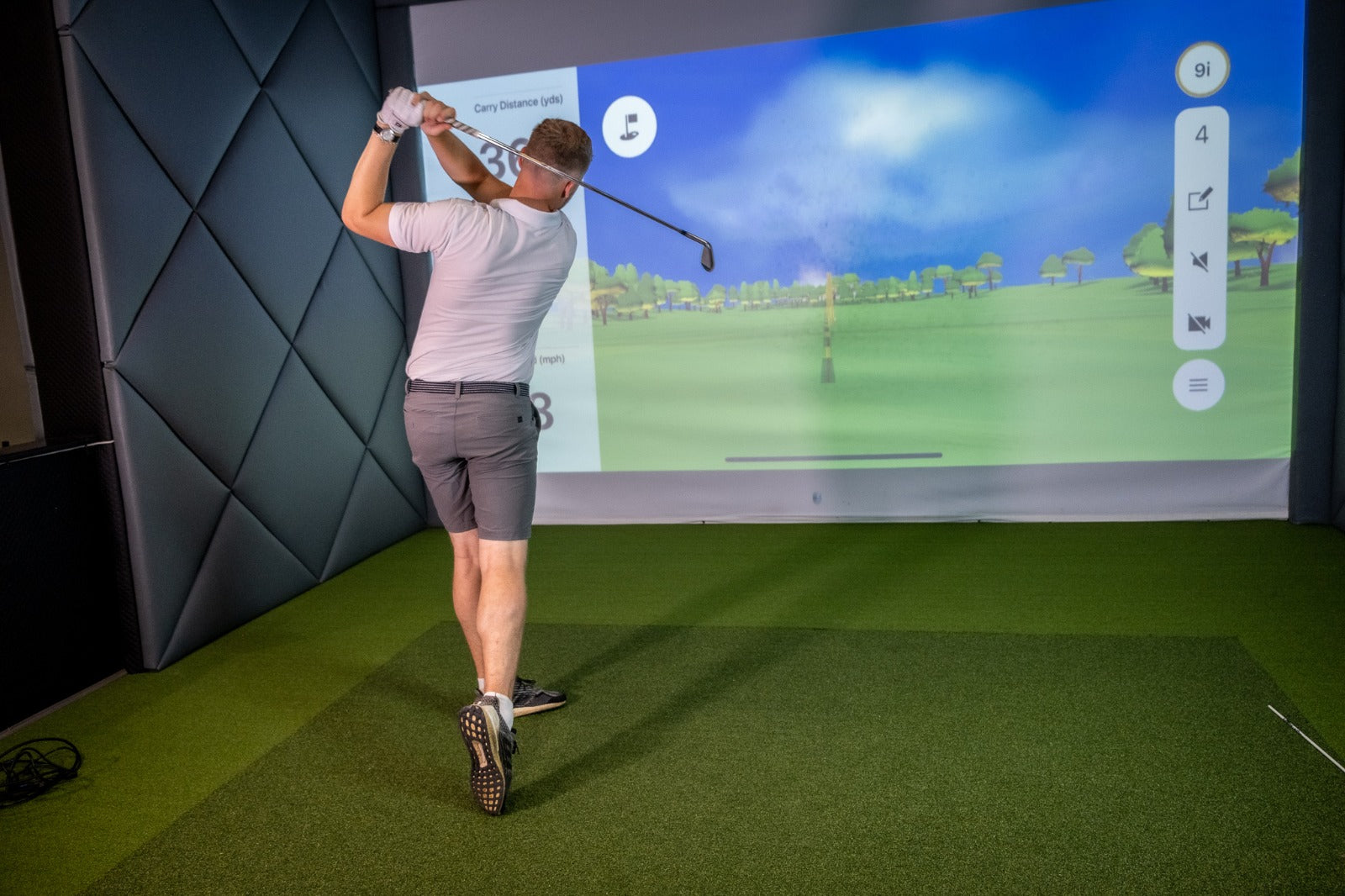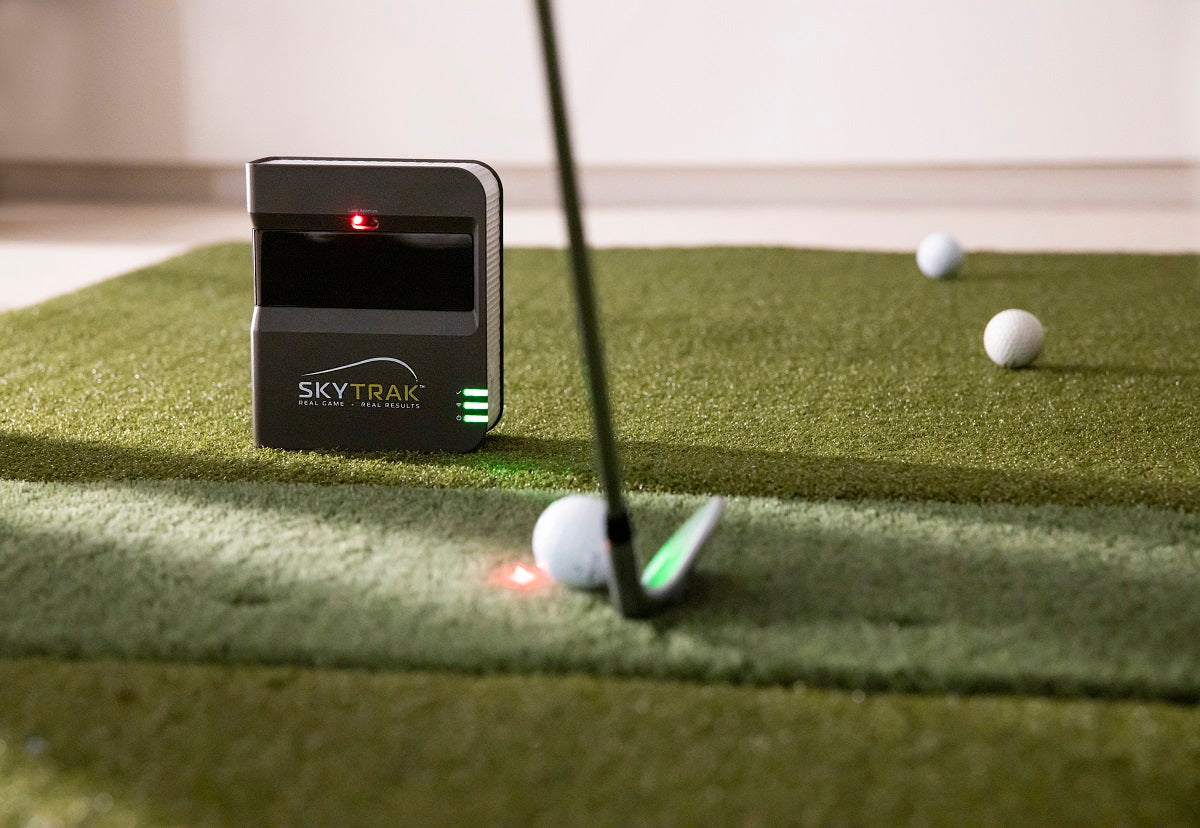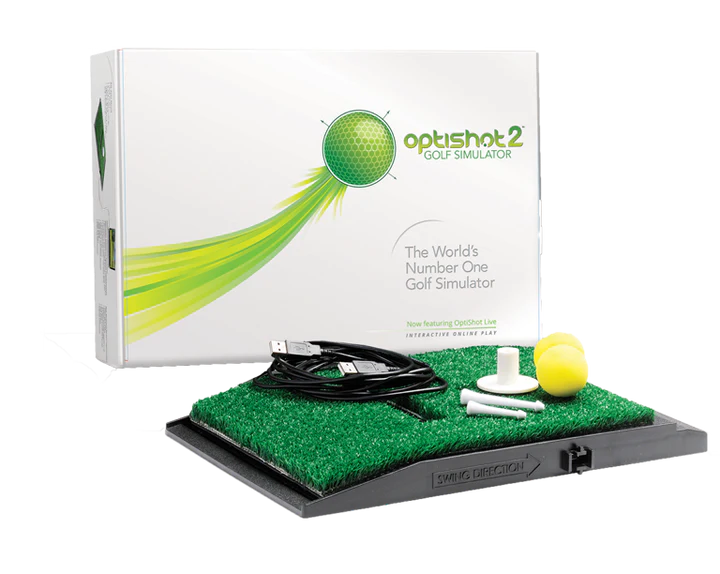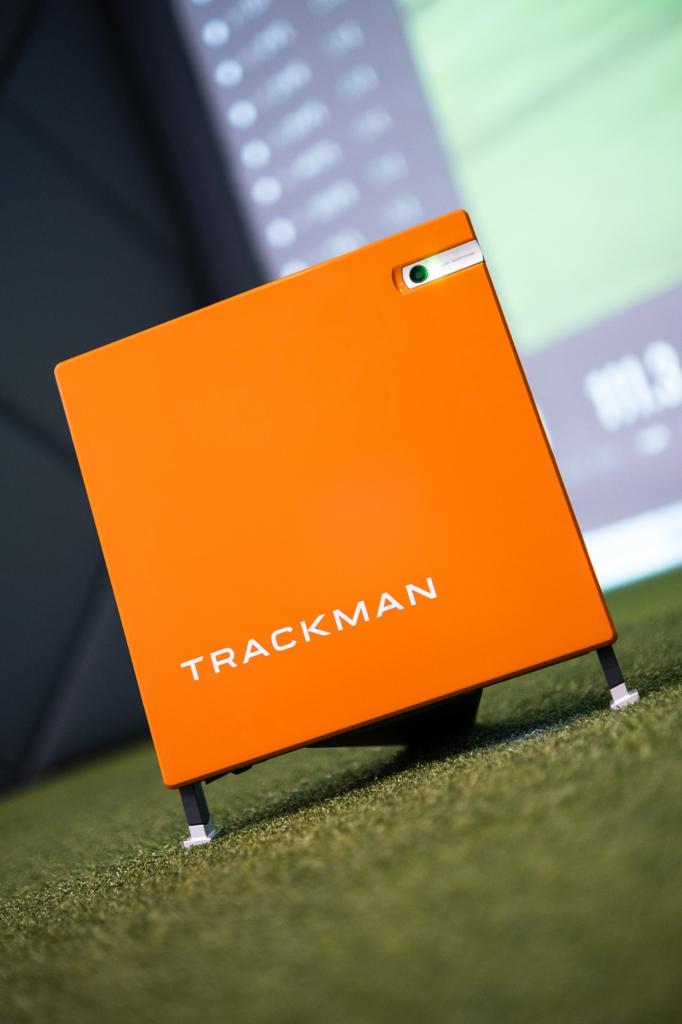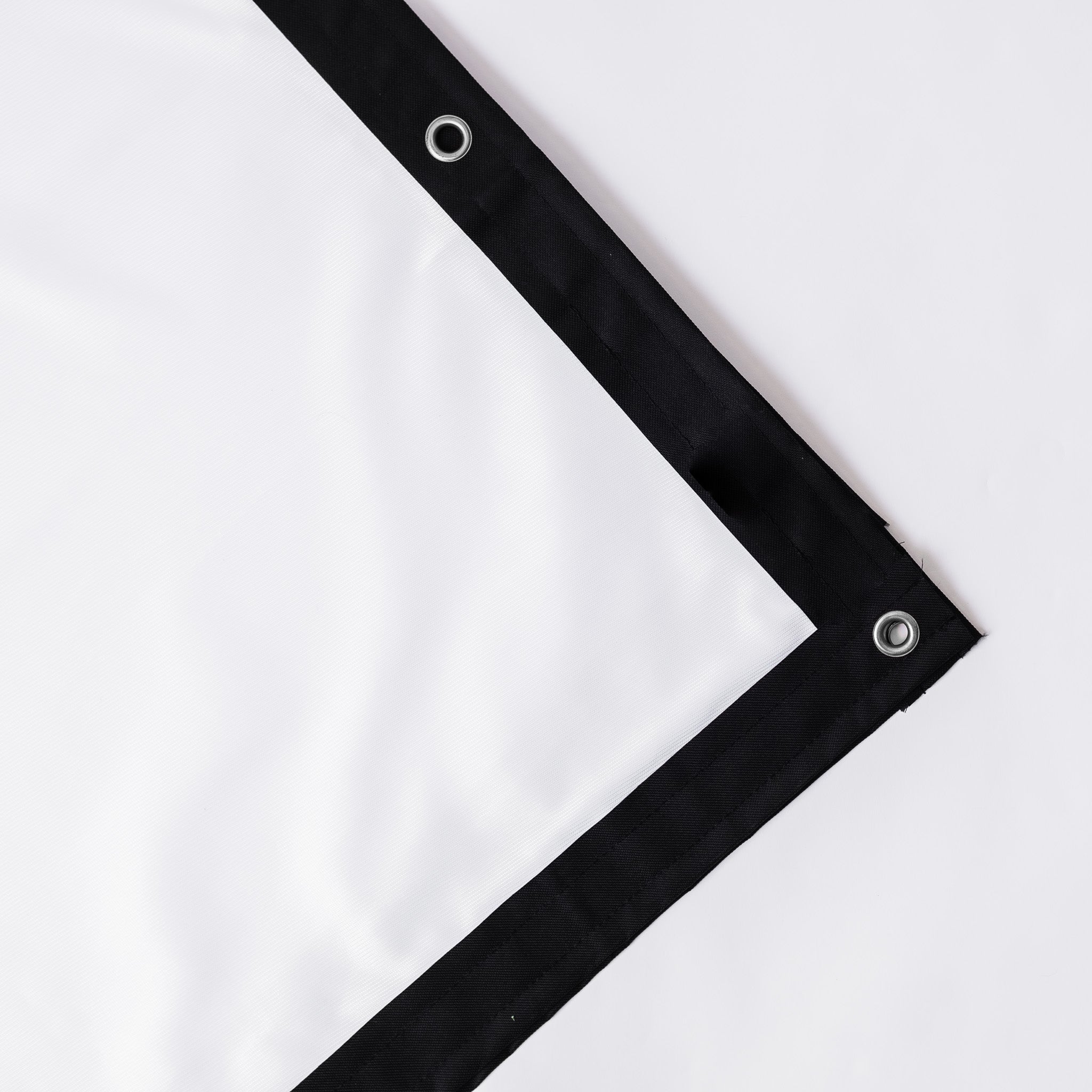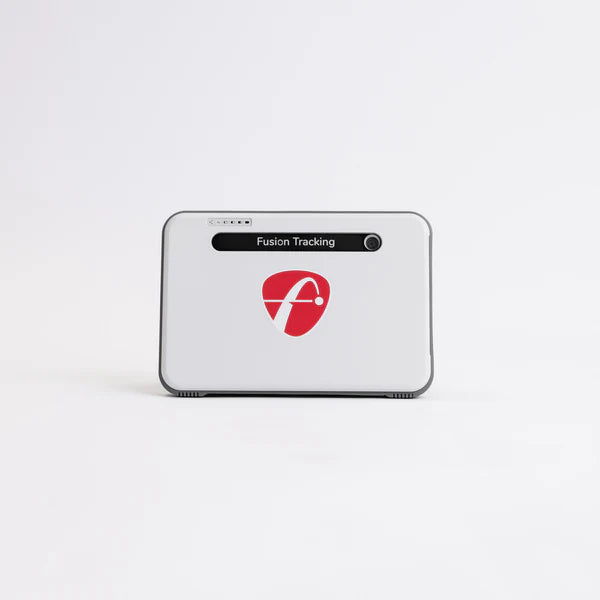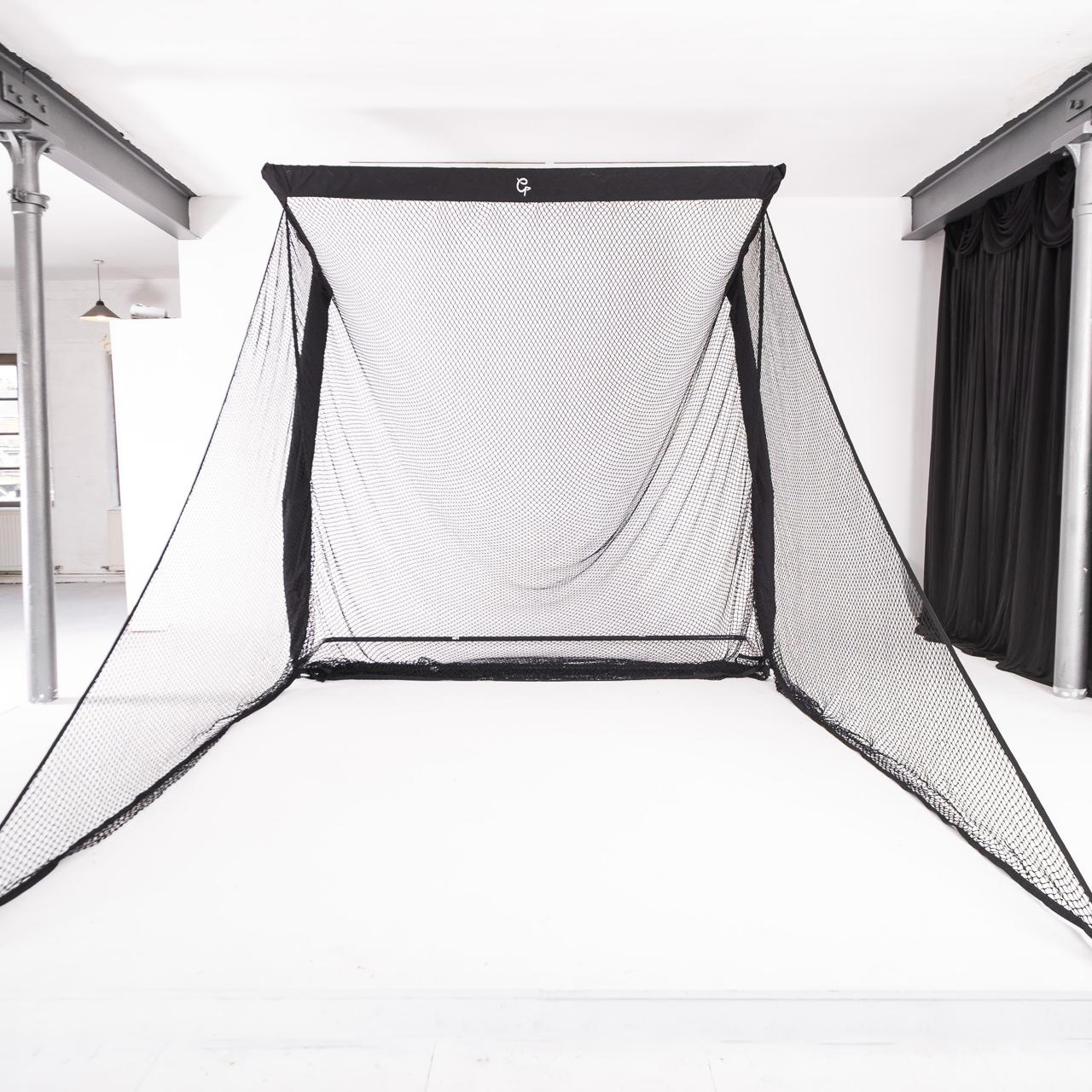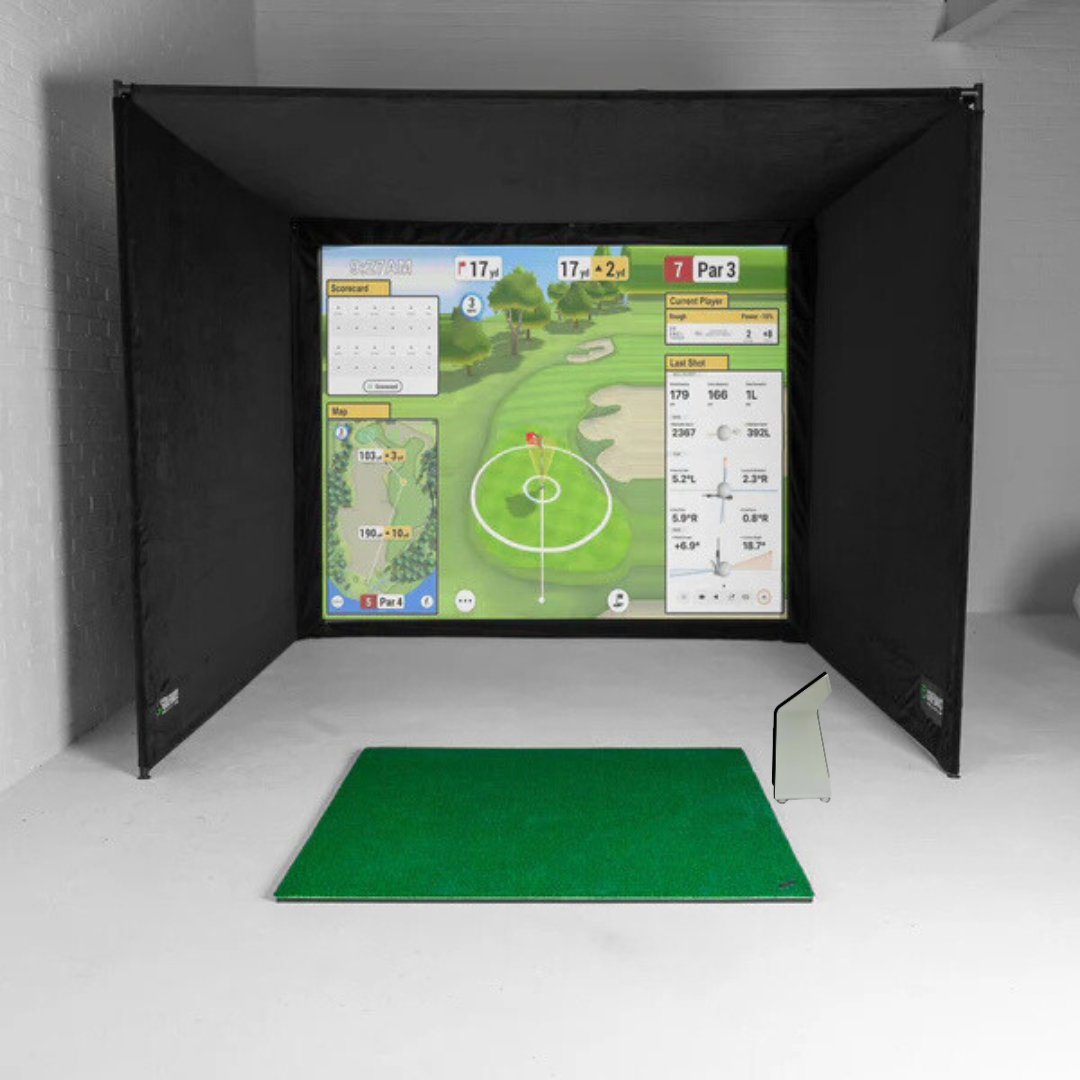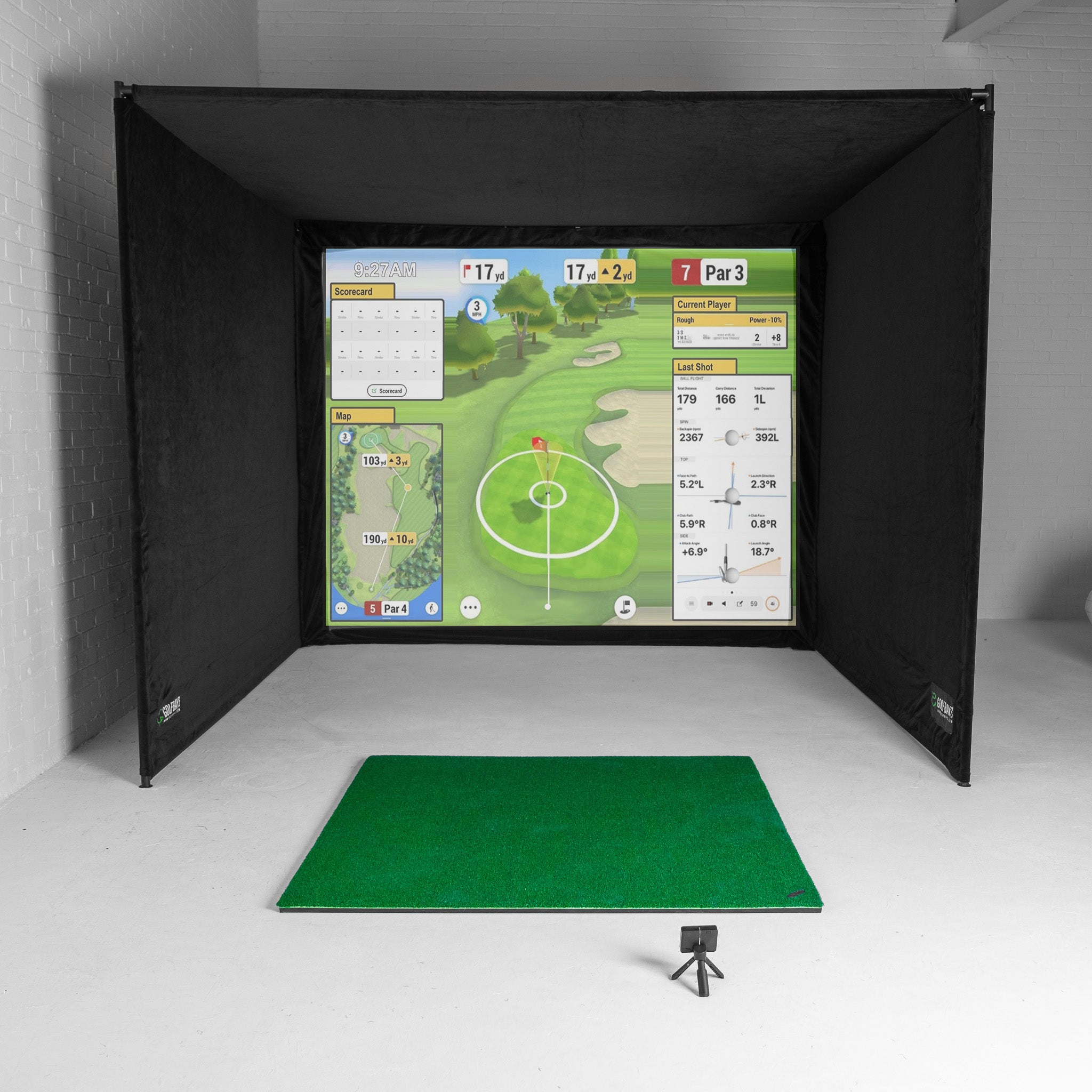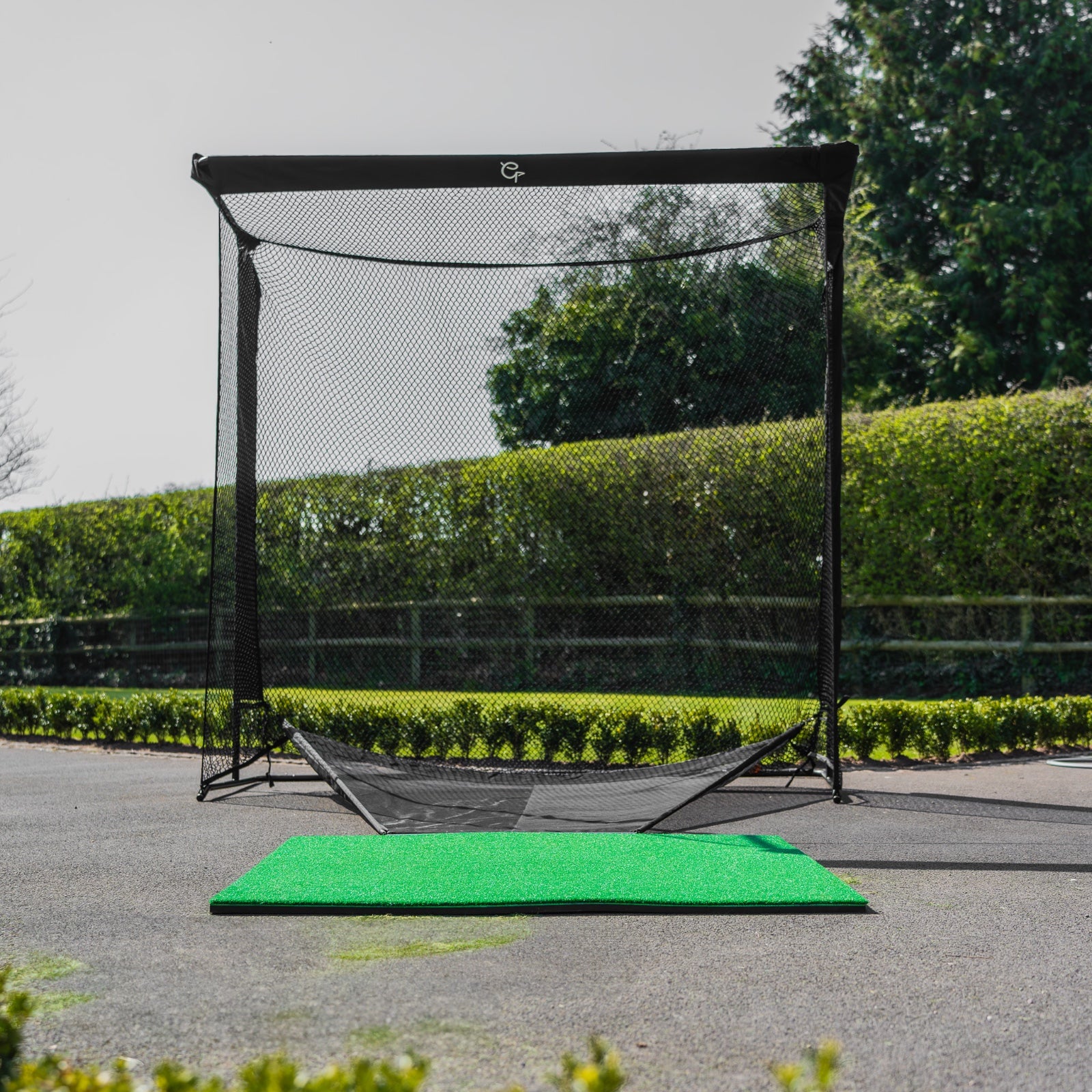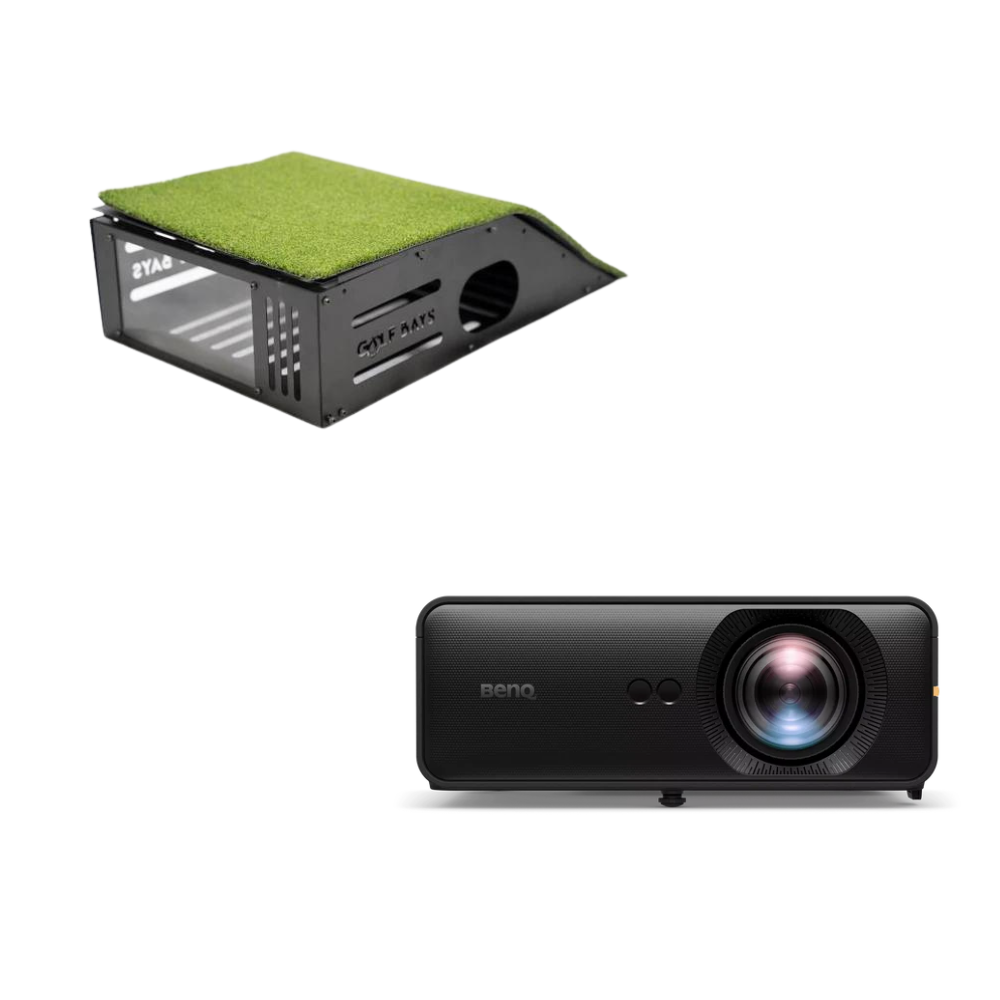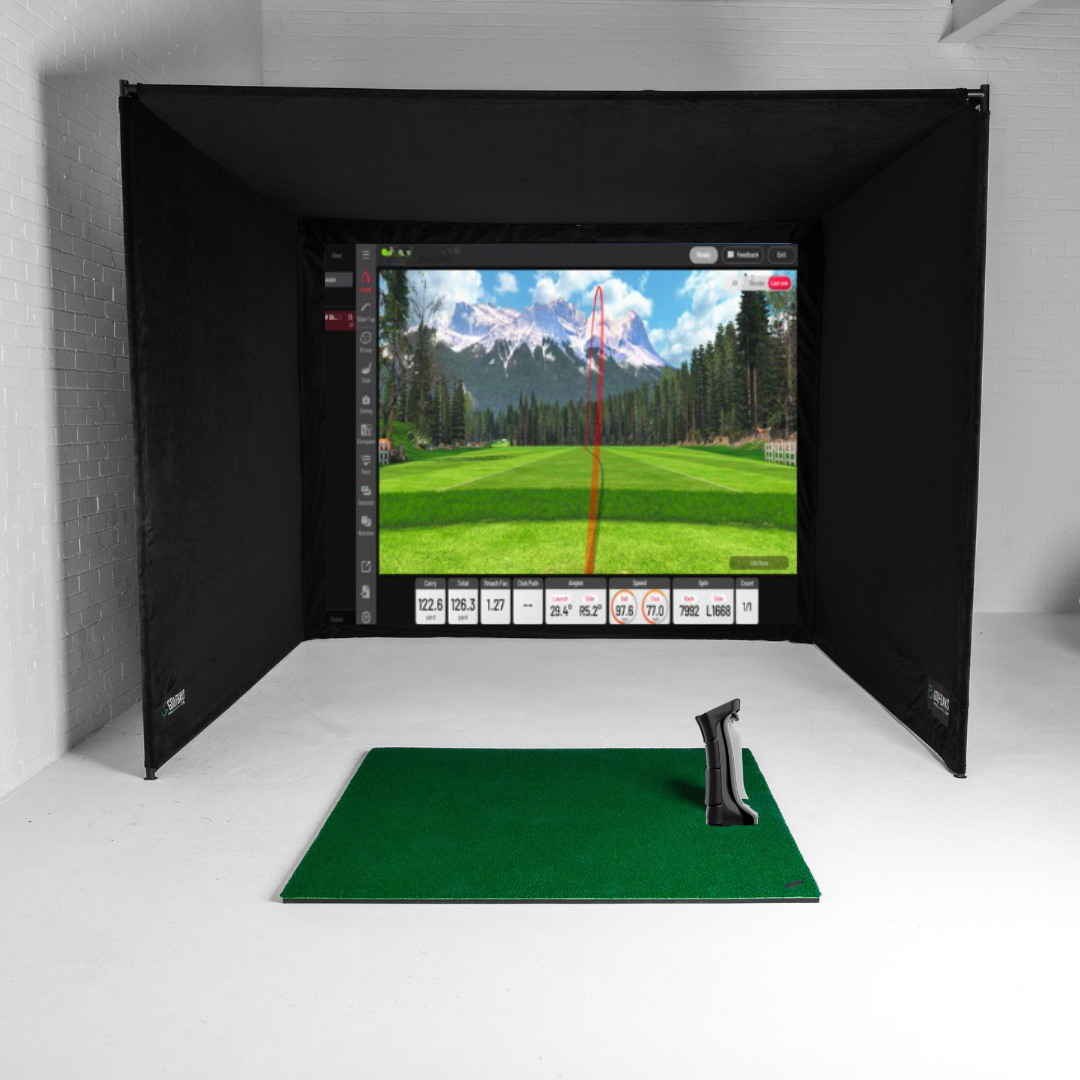Considering all the swing gadgets competing for space in your bag, golf alignment sticks might still rank as the simplest, most accessible training aid. Coaches around the world use them to check aim, ball position, and swing path, and many tour players use them for drills on the range when warming up for a round.
So how can something so small and low-tech have such an oversized impact?...

Your New Secret Weapon: Golf Alignment Sticks
A simple truth in golf is that a lot of bad shots don’t come from a disastrous swing - they come from starting in the wrong place. Aim a few yards off line, let your stance or posture slip, or set the ball in a position that doesn’t quite match the club you’re using, and suddenly your swing has to make compensations you never intended.
That's where alignment sticks come in. They give you clear, honest feedback on where you’re actually pointing, how your setup looks, and whether your expectations match reality.
It’s why PGA professionals and top coaches build whole sessions around a couple of bright rods on the ground. Used well, alignment sticks help you groove a repeatable setup, a more reliable swing path, and better start lines with everything from driver to putter.
At GolfBays, we stock a number of swing alignment tools. If you just want a dependable pair for everyday range work, the Tour Rodz Alignment Sticks are a classic, no-fuss option for checking aim, ball position and basic swing mechanics. If you prefer something that lives in your bag and goes everywhere with you, the Longridge Portable Tour Rod Alignment Sticks fold down small and are built for portable practice, while the PuttOut Putting Plane Alignment Stick Set gives you a compact, indoor–outdoor setup for working on putting alignment, stroke path and face control.
When you’re ready to get more technical, the Swing Plate and the Swing Plate Dual Pro turn a simple pair of alignment sticks into a full practice station. With adjustable stick angles for swing plane, club path and start-line gates, they’re ideal for building repeatable movement patterns instead of just hitting ball after ball and hoping something changes.
View all of our Alignment Stick products here.
Whichever route you take, the aim is the same: to make every practice session more precise, more consistent, and more productive than emptying another bucket and hoping for the best.
What Are Golf Alignment Sticks?
Golf alignment sticks are exactly what they sound like: slim, lightweight rods designed to give you a clear visual reference of your swing on the ground. They help you line up properly, rehearse better positions, and build a more consistent swing, without adding any extra complexity to your practice.
You’ll see them all over tour ranges. Before a single ball is struck, many players lay down a couple of rods to check their aim, confirm ball position, and rehearse the path they want the club to travel on. It’s simple, repeatable, and brutally honest. If something in your setup is off, an alignment stick will make it obvious straight away.
For everyday golfers, they’re one of the easiest ways to improve the fundamentals that quietly shape every shot you hit. They keep your aim square to the target, tidy up your stance and posture, and guide your swing path so you aren’t fighting the same slice or pull round after round.
And the best part? They’re far more versatile than they look. One minute they’re helping you with start lines, the next they’re a makeshift putting gate, a chipping landing-zone marker, or a swing-plane rail. No batteries or screens needed, just pure feedback.
Sure, a good practice session might look like you’ve pitched a tiny neon campsite on the range. But look on the bright side: two sticks, endless ways to get better.
Why Alignment Matters More Than You Think
Most golfers blame their swing for every bad shot. In reality, a lot of slices, hooks and mis-hits start before the club even moves. If your feet, hips, shoulders and clubface aren’t all looking at roughly the same place, you’re asking a decent swing to do a very hard job.
Aim a bit right, think you’re square, then make your normal move… the ball will start miles from where you pictured it. Nudge the ball too far forward or back in your stance… suddenly strike, height and direction all change. That’s not you having a terrible swing. That’s you starting from a poor setup.
Alignment sticks bring truth and clarity to your practice. Lay one along your target line and one along your feet and you can instantly see whether your set-up matches what you had in mind. Add a stick to mark ball position, or use two as a simple gate on either side of the ball, and you’ll quickly learn to spot the patterns. Do you tend to hit off the toe or the heel? Does your path naturally move a touch from in-to-out or out-to-in? Do you stay centred, or drift off the ball?
Over time, that honesty builds consistency and confidence. When your setup looks the same every time, and you know you’re starting from a good place, you can swing without second-guessing yourself. That means fewer compensations and last-second panic adjustments, and more shots that come out how you intended.
Otherwise, trying to hit a fairway with bad alignment is a bit like using a sat-nav that’s a few degrees off. You might set off feeling positive, but you’re almost guaranteed to end up somewhere you didn’t plan – and no, it’s not always the driver’s fault!

What are the Benefits of Using Alignment Sticks?
Alignment sticks don’t look like much, but once you start using them properly, they quietly transform the way you practise. They sharpen the fundamentals for new golfers and give experienced players the precision they need to fine-tune ball flight, strike and consistency.
Here are 5 benefits of including them in your training routine…
Add Accuracy to Your Aim
Most golfers genuinely believe they’re aiming at the target… until a stick on the ground proves otherwise. A single line pointing at your intended spot immediately reveals whether your feet, hips and shoulders are actually set where you think they are. The guesswork disappears. Your intentions match reality, and that alone brings a level of clarity many players have never experienced. When you know you’re aimed correctly, everything that follows feels more committed and much more confident.
Build a Consistent Setup
One of the quieter truths in golf is that what feels like losing your swing is often your setup drifting over time. Stance creeps a touch wider, shoulders sit a little open, ball position edges forward without you noticing. Alignment sticks make all of that visible. A stick along your toes gives you a clear reference for how wide you’re standing and where you’re aimed; a line pointing at the target shows instantly whether your feet, hips and shoulders are running parallel to it. Instead of relying on feel, you build a setup that looks the same every time, and a routine that genuinely repeats.
Improve Your Swing Path
Few things influence ball flight more than the direction the club is travelling through impact. Place a stick just inside or outside the ball and you’ve created a simple path indicator: clip the stick and you know your club is coming too far from that side. Angle a stick slightly to match your ideal corridor and you suddenly have a visual guide for a neutral path, a soft draw or a controlled fade. It’s one of the quickest ways to turn vague swing feels into something accurate and trainable.
Get Better Ball Positioning
Ball position affects strike, launch and start direction, yet it drifts more than most golfers realise. Put an alignment stick across your stance, perpendicular to your target line, and you now have a reliable reference point. You can place the ball slightly forward for longer clubs, around the centre for mid-irons, and exactly where you want it for wedges or speciality shots. No more guesswork. Just a clear starting point that matches the shot you’re trying to hit.
Groove Your Putting Alignment
Putting is far easier when you know your ball is starting on line. Two alignment sticks become a perfect little gate: roll the ball through and you’ve nailed your start direction; hit a stick and you know the face or stroke is off. You can also lay sticks down to create a channel for your putter to follow, helping you square the face and keep your stroke tidy. It works on practice greens, putting mats, and with simulator setups.
7 Simple Drills for Your Golf Alignment Sticks
The drills below are simple, widely recommended by coaches, and work whether you’re practising on the range, at home on a mat, or in a simulator bay. Each one has a clear setup and purpose.
Basic Aim & Alignment Drill
Setup
Lay one alignment stick on the ground, pointing directly at your target. Lay a second stick along your toes, parallel to the first.
What it does
Shows instantly whether your feet, hips and shoulders are aligned where you think they are. Many golfers trust their feel, but a simple stick on the ground tells the real story.
How to use it
Hit 10-15 balls with the sticks down. Reset your address each time. Watch your start line and see how closely it matches your intended aim.
Ball Position for Every Club
Setup
Place one stick across your stance (perpendicular to the target line). Use it as a clear reference point for where the ball sits.
What it does
Helps prevent ball position drifting forward or back, which is a common root cause of fat, thin and inconsistent strikes. Coaches rely on this drill to teach ball-then-turf contact and consistent setup.
How to use it
-
Longer clubs slightly forward of centre.
-
Mid-irons around centre.
-
Wedges slightly back or centre, depending on the shot.
Hit a few balls with each club and note how the ball position affects the strike.
Swing Path Drill
Setup
Go with one of two setups:
-
Train-tracks: Two sticks on the ground, parallel to your target line and slightly wider than your clubhead.
-
Path gate: One or two sticks angled just inside or outside the ball to represent the path you’re trying to build.
What it does
Provides clear visual feedback on whether your swing path is coming too far from the inside, too far over the top, or closer to neutral. This is a go-to drill for working on slices and pulls.
How to use it
Start with slow, controlled half-swings, aiming to swing through the lane or gate without touching the sticks. Increase speed only when you can repeat it consistently.
Footwork & Stance Width
Setup
Lay a stick along your toes or slightly in front of them.
What it does
Helps you maintain a consistent stance width and body alignment. Small changes in stance can affect balance, weight shift and your ability to return the club to the ball. This drill keeps your setup tight and tidy.
How to use it
Before each shot, check whether your stance is the width you intended and that your feet are parallel to the target line. Adjust if needed before swinging.
Putting Gate Drill
Setup
Lay two sticks on the ground just wider than the width of your putter head.
What it does
Gives instant feedback on start line. If the ball clips either stick, your stroke or face angle was off. If it rolls cleanly through, you’re starting the ball on line.
How to use it
Hit putts through the gate. Aim for 10 clean rolls in a row.

Short-Game Drill: Low-Point Control Gate
Setup
Lay one stick on the ground just behind the golf ball, about a clubhead’s width. Hit chip and pitch shots without striking the stick. You can also place a second stick slightly ahead of the ball to visualise where the club should bottom out.
What it does
-
Trains you to strike the ball first, then the turf.
-
Helps ensure your weight, shaft angle, and low point are set correctly.
-
Forces clean contact and prevents scooping or flicking at the ball.
-
Builds the crisp, predictable strike that separates solid chippers from inconsistent ones.
Hit the stick? Your low point was too far back. Miss the stick cleanly? You made proper ball-first contact.
This is a simple and repeatable short-game drill, ideal for players who hit behind the ball.
Body Rotation & Hip Line Control
Setup
Thread an alignment stick through your belt loops so it sticks out on both sides.
What it does
This gives immediate visual feedback on how your hips are moving. If the stick slides dramatically or points up/down during your swing, you’re likely swaying rather than rotating, which can be a common cause of inconsistent strikes.
How to use it
Make slow half-swings and watch the stick. Aim for rotation rather than slide. When the movement looks stable and controlled, build up to fuller swings. This drill works best when you record yourself and review it in slow motion. Use the sticks as a guide to what the rest of your body is doing.

Golf Alignment Stick Product Overview: What's Available?
|
Product |
What it is | Best for | Ideal drills / uses | Good to know |
|---|---|---|---|---|
| Pair of full-length alignment sticks supplied with a protective tube and drill booklet. | Golfers who want a simple, durable pair for everyday range and home practice. | Aim and alignment, ball-position checks, swing-path gates, putting start-line gates, chipping and pitching checks. | Reliable, non-collapsible, and ideal as a general-purpose alignment stick set. | |
| Longridge Portable Tour Rod Alignment Sticks | Pair of alignment rods that fold into four sections and pack down into a short tube for easy storage in your golf bag. | Players who want alignment sticks that travel well or prefer compact storage in the bag. | All core alignment-stick drills: aim, alignment, ball position, path gates, and posture checks. | Functionally similar to standard sticks, but more portable and convenient thanks to the folding design. |
| PuttOUT Putting Plane Alignment Stick Set | Putting-specific training station including alignment sticks, an adjustable putting plane and gates. | Golfers who want structured putting practice with a focus on stroke path and start line. | Putting arc training, start-line gates, pace-control work and stroke-path refinement. | The included sticks can also be used for general alignment, but the full set is optimised for putting. |
| The Swing Plate | Single-socket weighted base that holds alignment sticks at adjustable angles. | Players who already own sticks and want to turn them into a proper full-swing training station. | Plane training, swing-path rails, start-line gates, body-movement checkpoints, low-point and strike guides. | Stable on mats, carpet and turf - ideal for home, range and simulator setups. |
| The Swing Plate Dual Pro | Dual-socket heavy base allowing two independently adjustable alignment sticks. | Coaches, keen improvers and simulator users who build more complex practice stations. | Dual plane/path rails, entry/exit gates, start-line and face-control gates, low-point and rotation checks. | Heavier and more robust than the standard Swing Plate, ideal for slopes and extension-pole drills. |
| Swing Plate – Official Alignment Sticks | Pair of yellow alignment sticks designed by the Swing Plate team to work perfectly with their bases. | Golfers who want a matched set of sticks to use with either Swing Plate unit. | All alignment-stick drills including plane rails, path gates, start-line guides and full-swing stations. | Standard alignment sticks that work both independently and as dedicated Swing Plate companions. |
Instant Feedback at a Great Price: Golf Alignment Sticks
In a market full of swing trainers, sensors and high-tech golfing gadgets, alignment sticks remain the quiet and consistent force that can drive honest improvement. They give you something a lot of the fancy gear can’t: instant feedback that sharpens your aim, tidies your setup, and keeps your swing travelling on the path you actually want - not the one you imagine.
Use them right and you’ll build a setup that repeats, a swing that holds up under pressure, and a practice routine with purpose. Whether you’re rolling putts through a gate, dialling in ball position, or fine-tuning swing plane with a Swing Plate, two simple rods can transform the quality of every shot you hit.
So keep it simple. The next time you’re tempted to blame your swing, drop a couple of sticks on the ground and let them tell you the truth. Your game will thank you for it.
